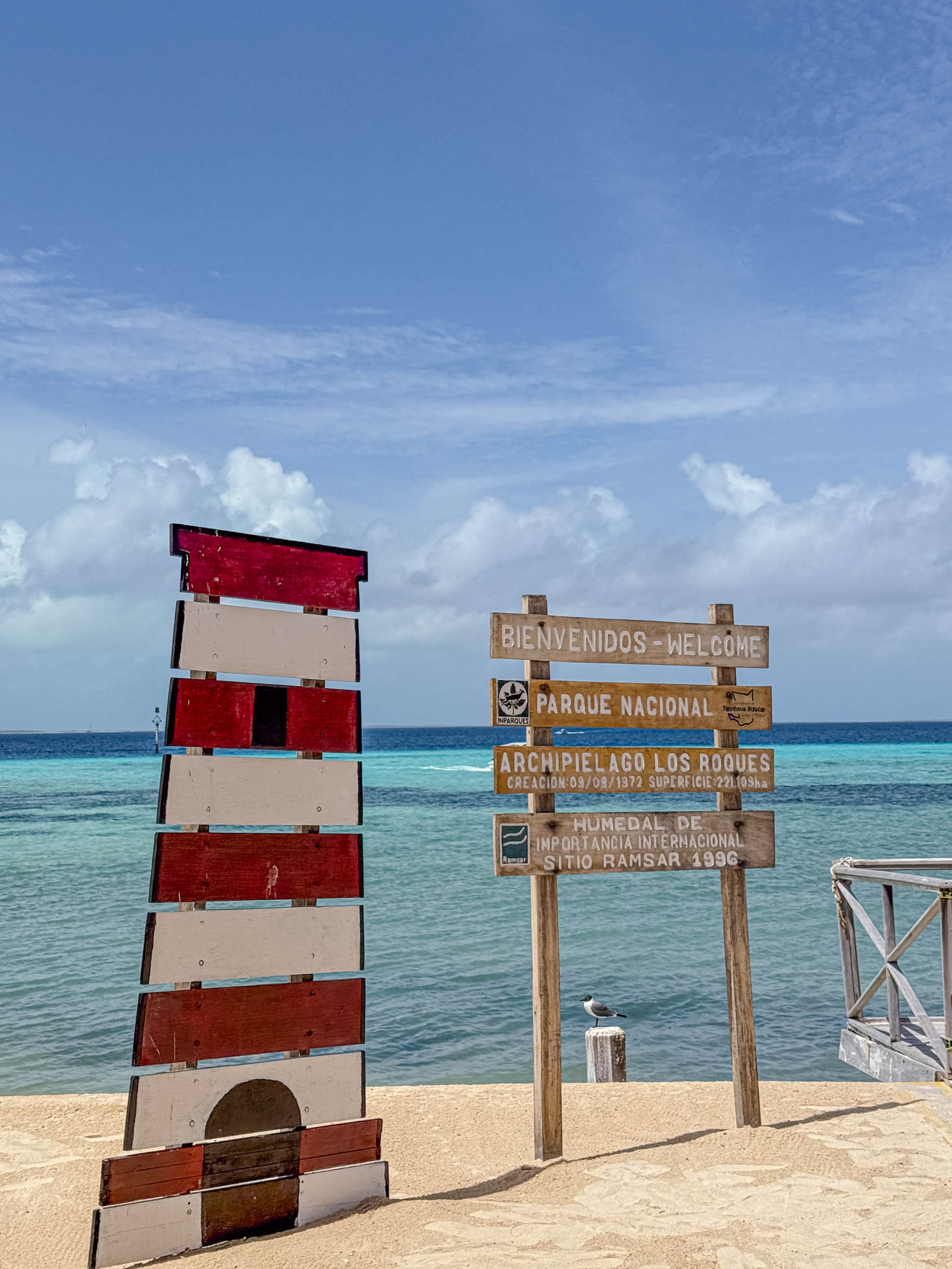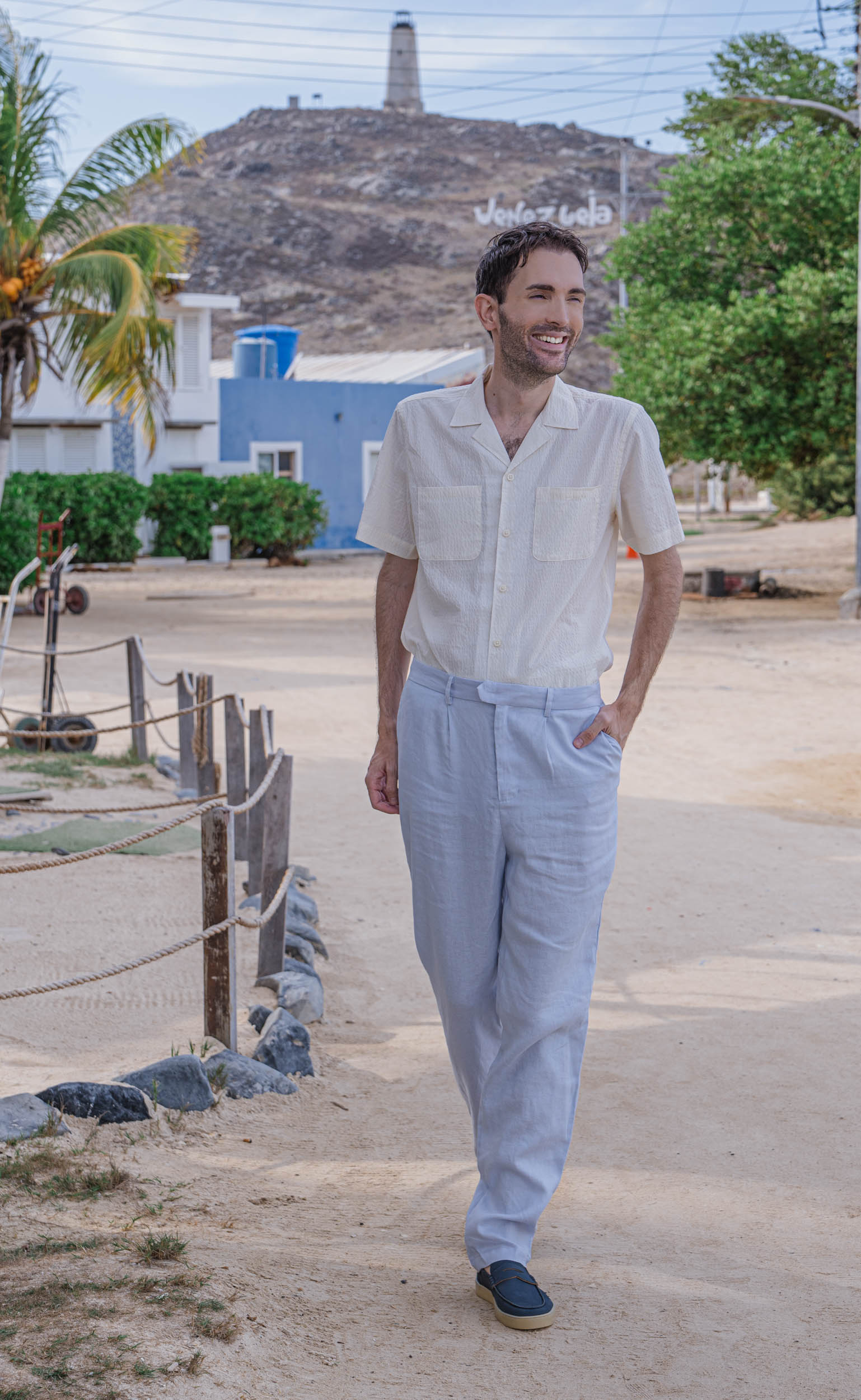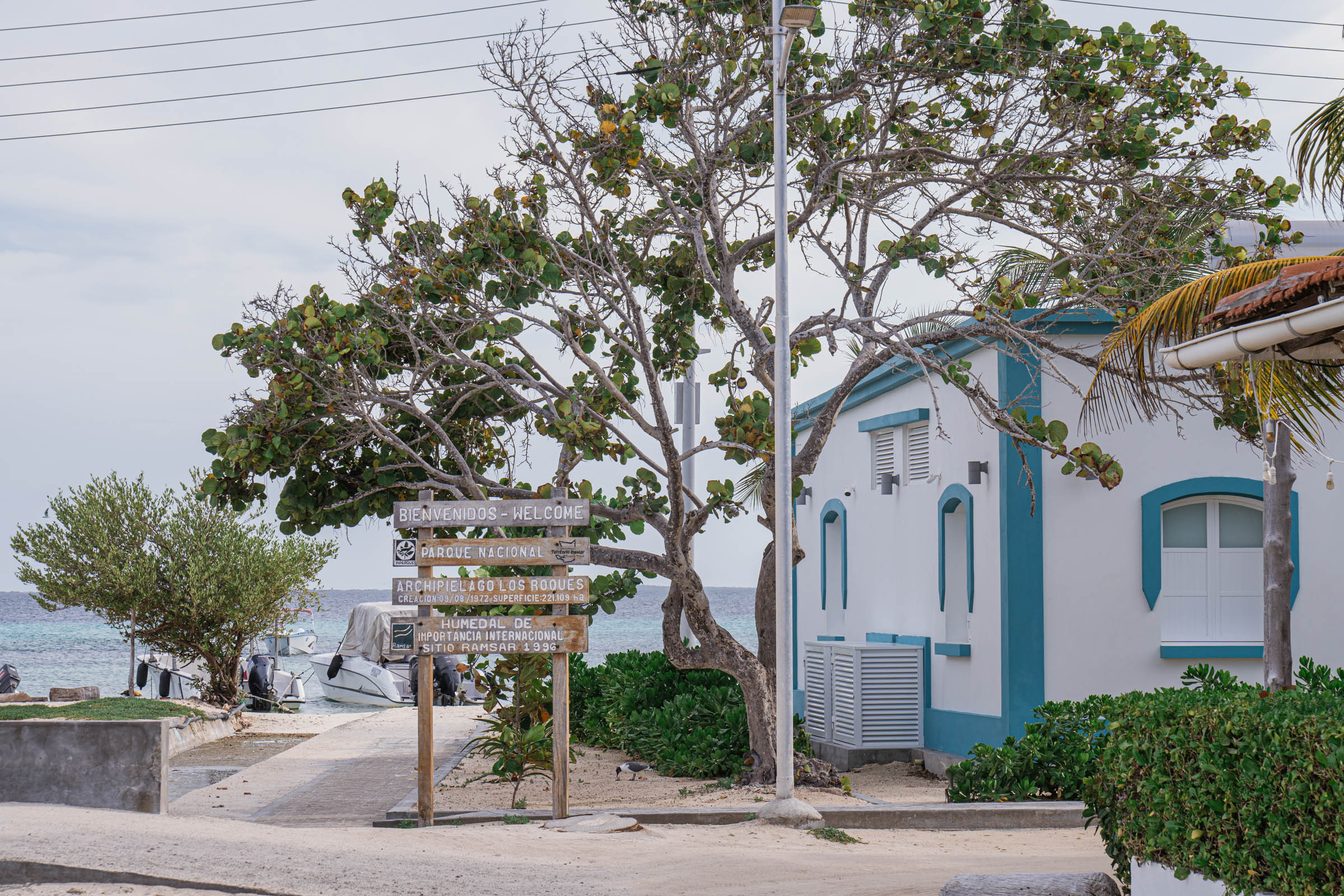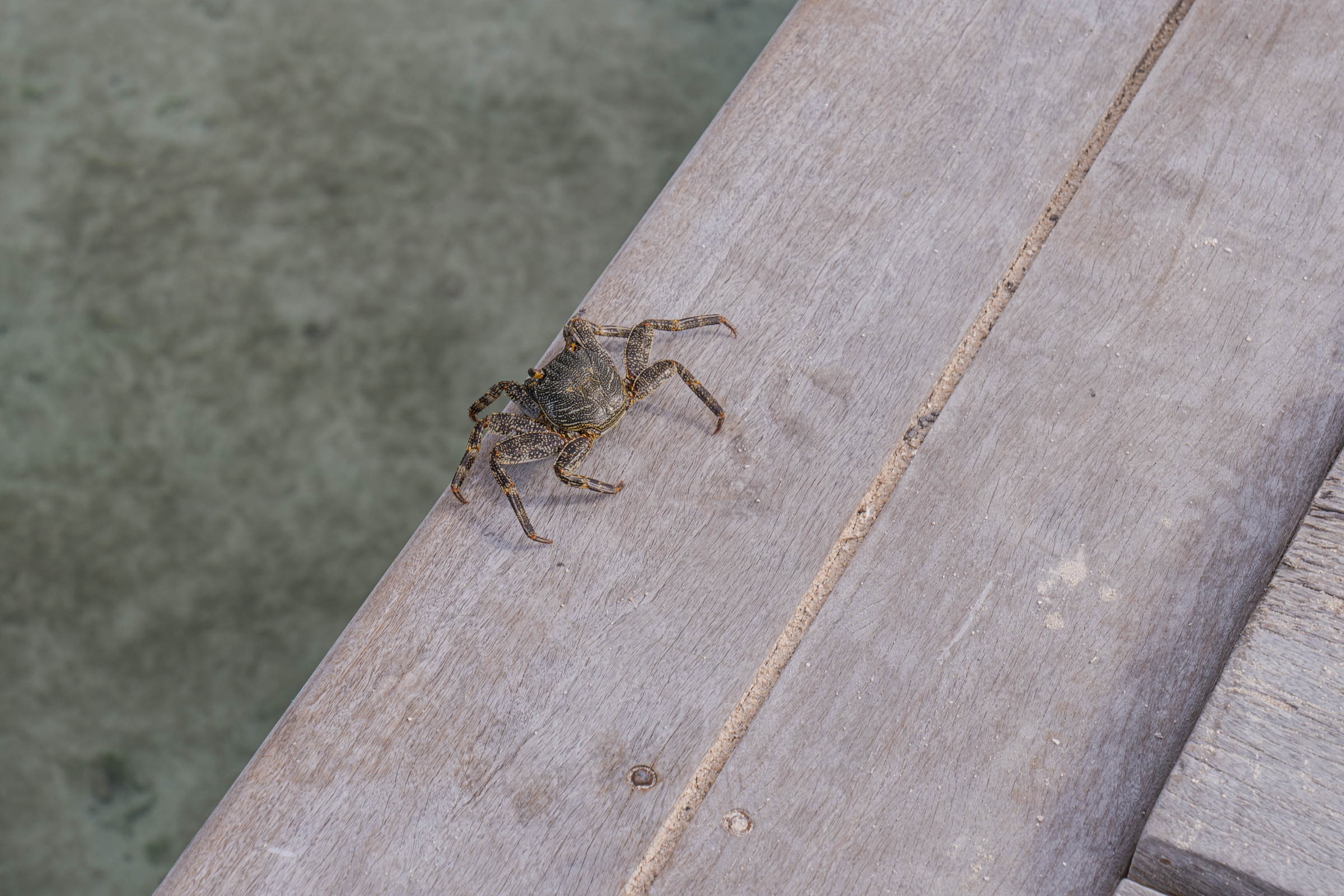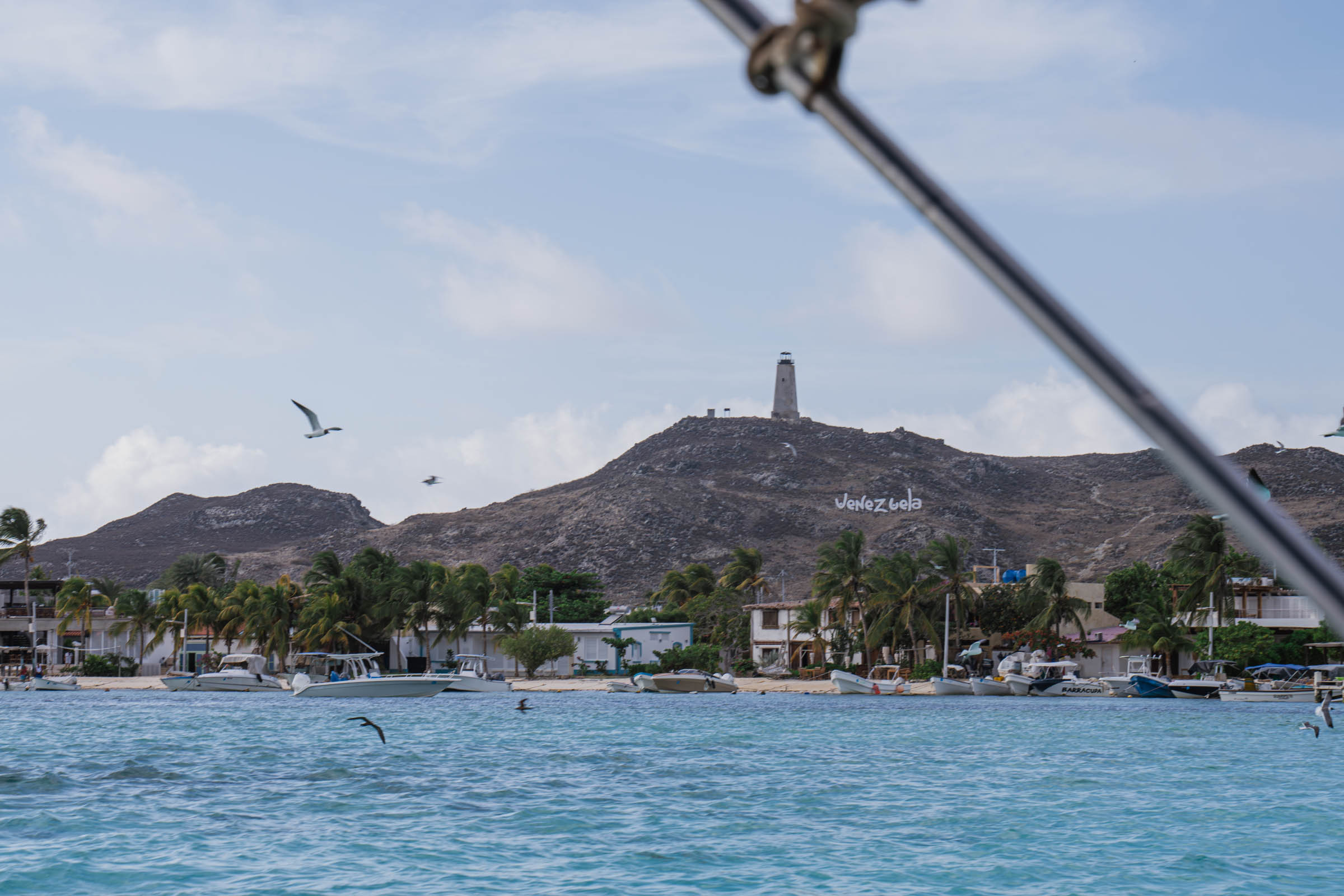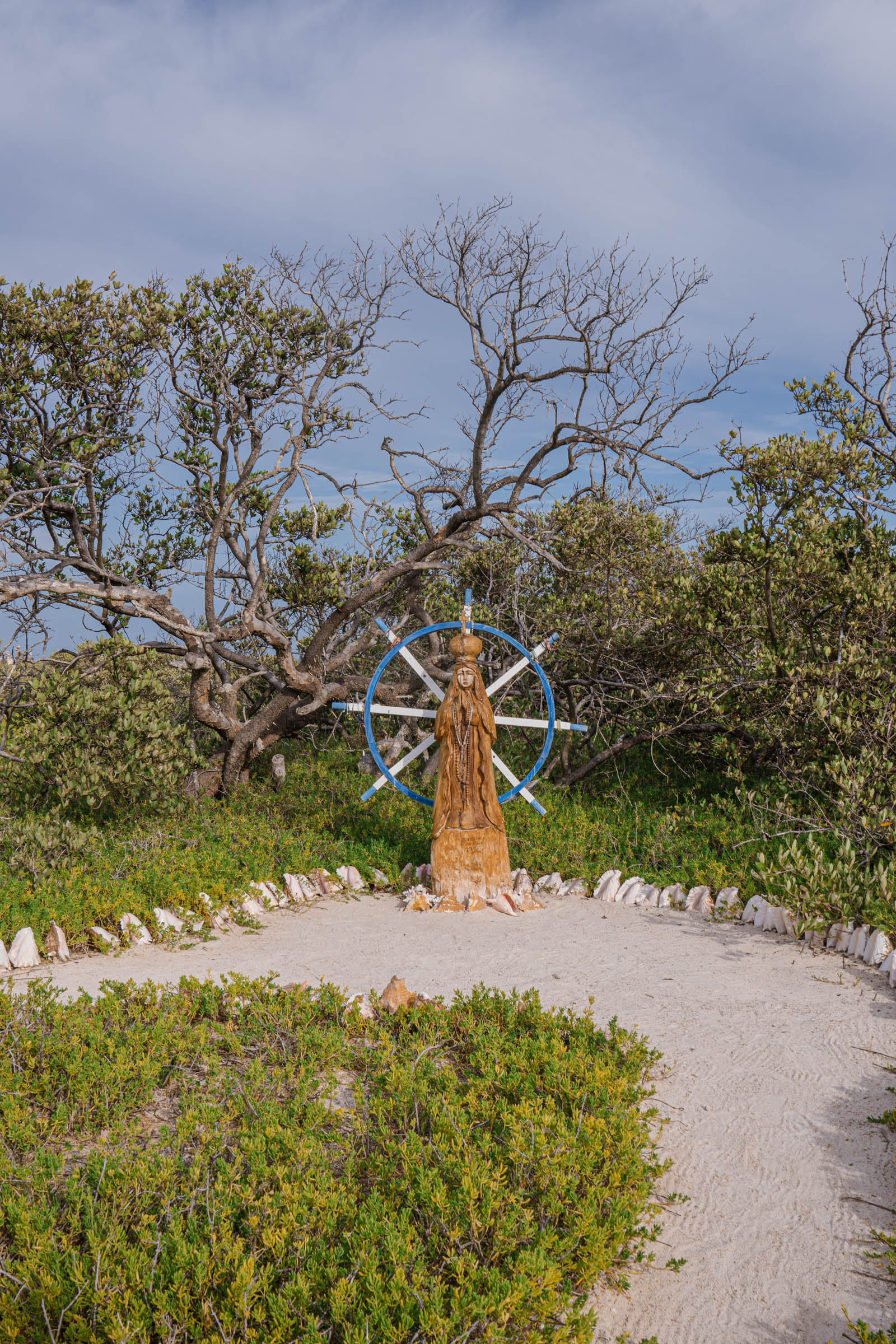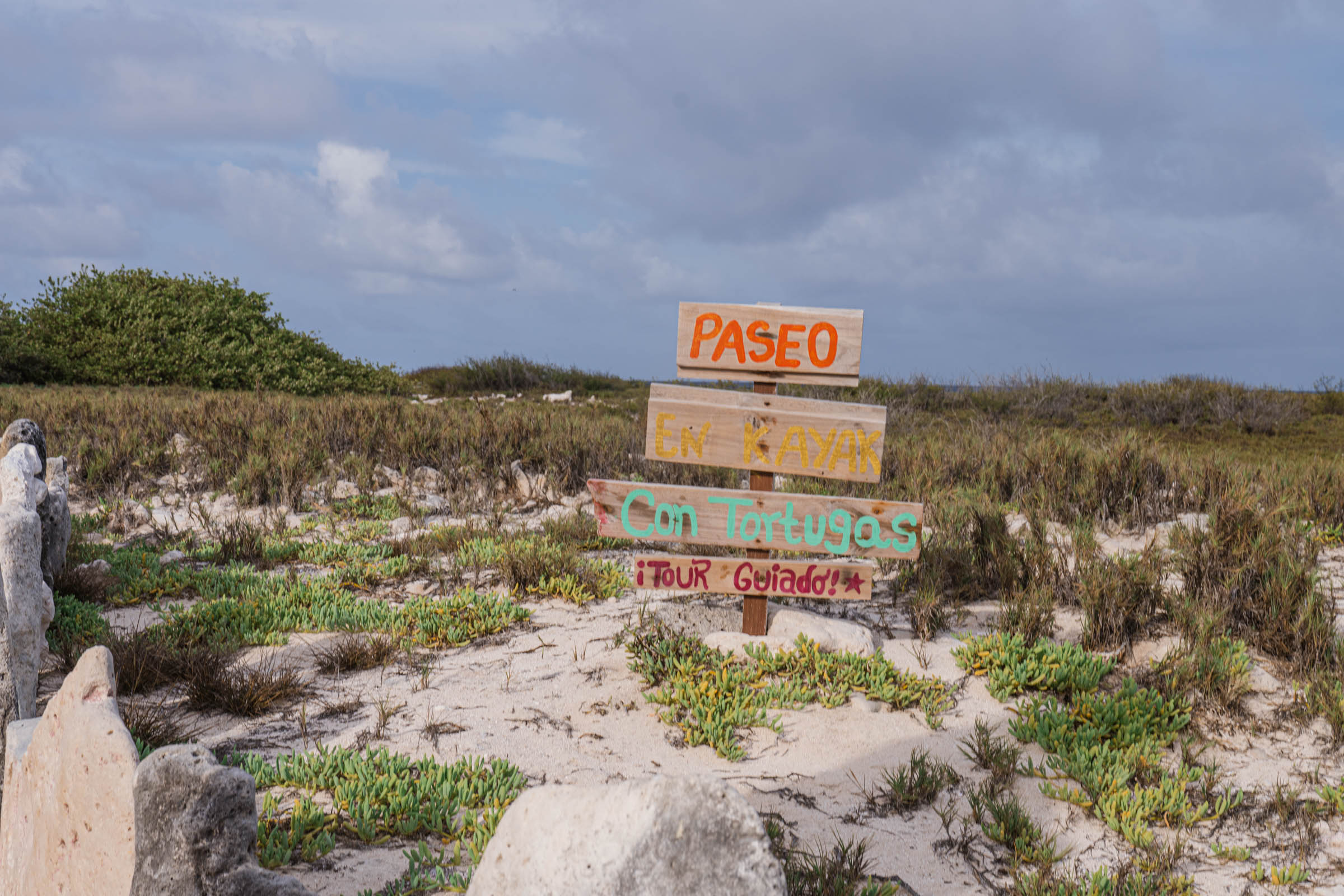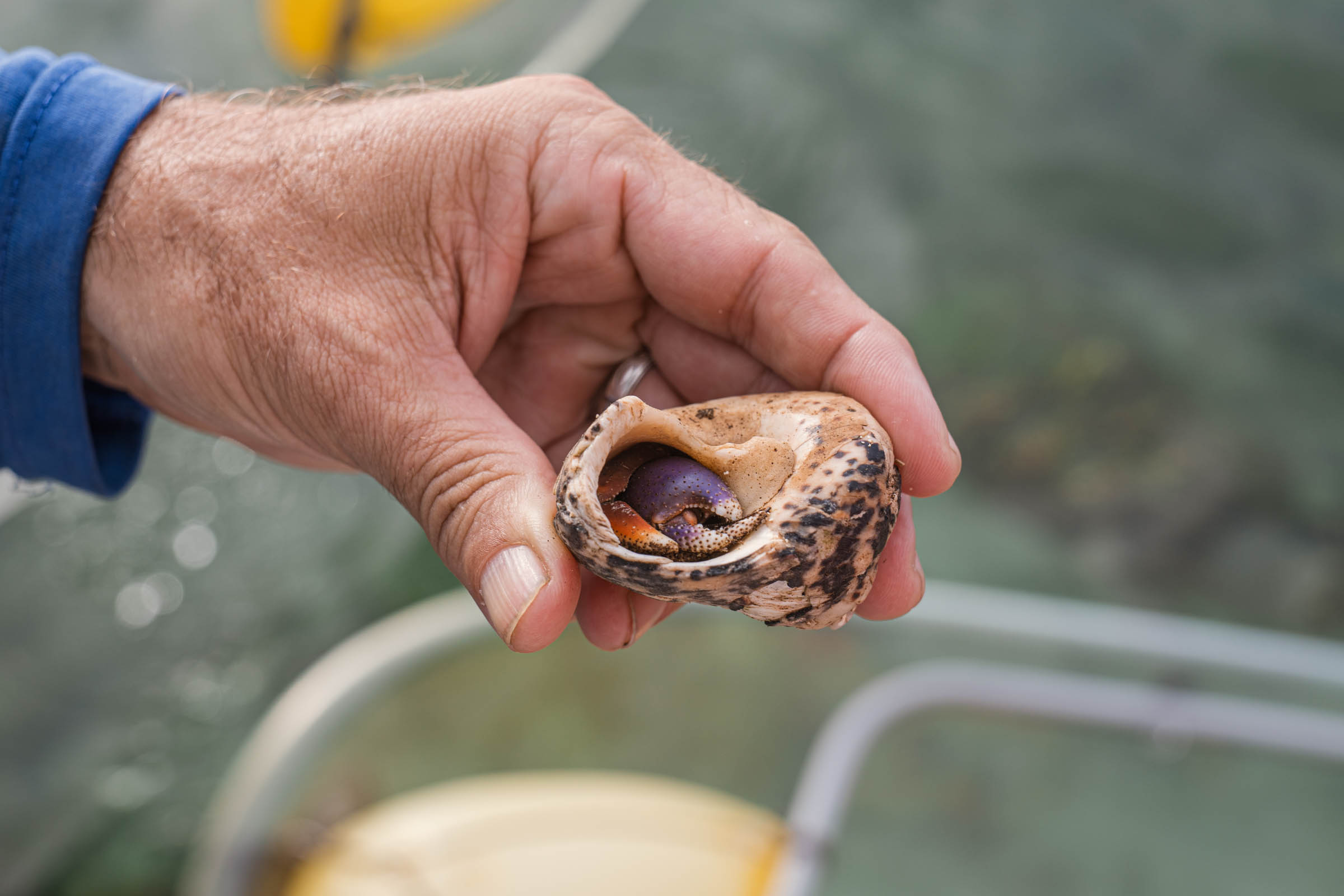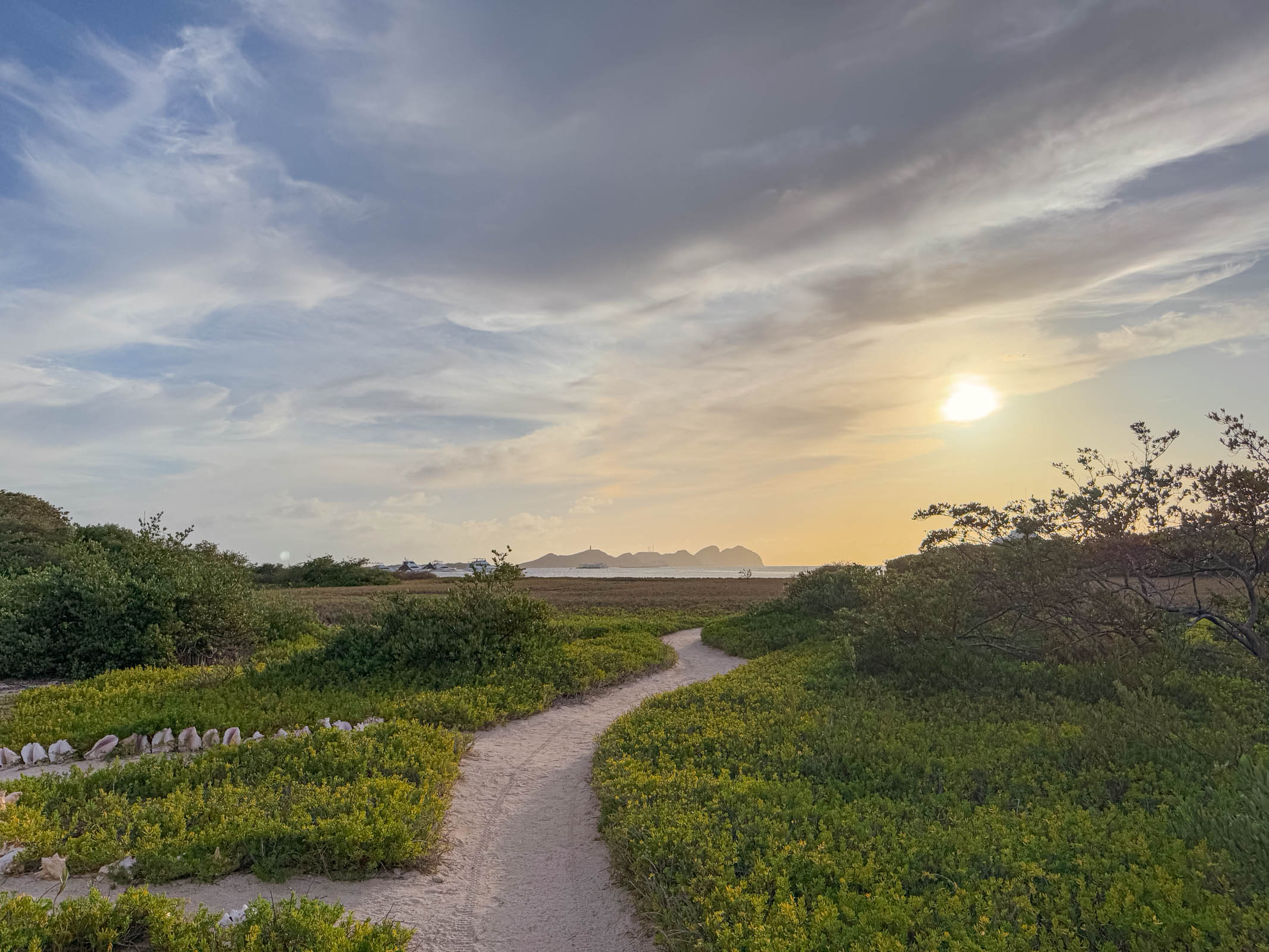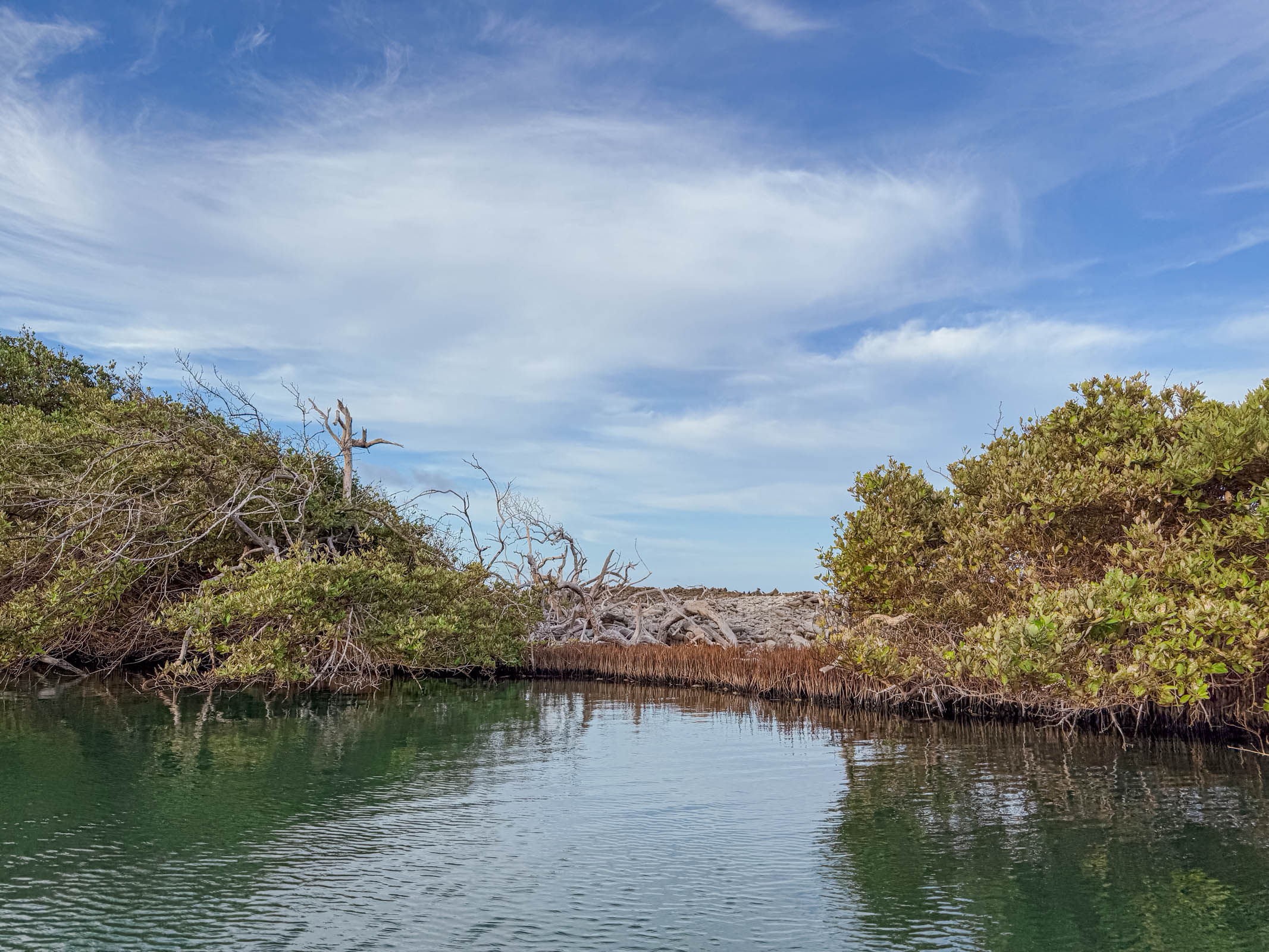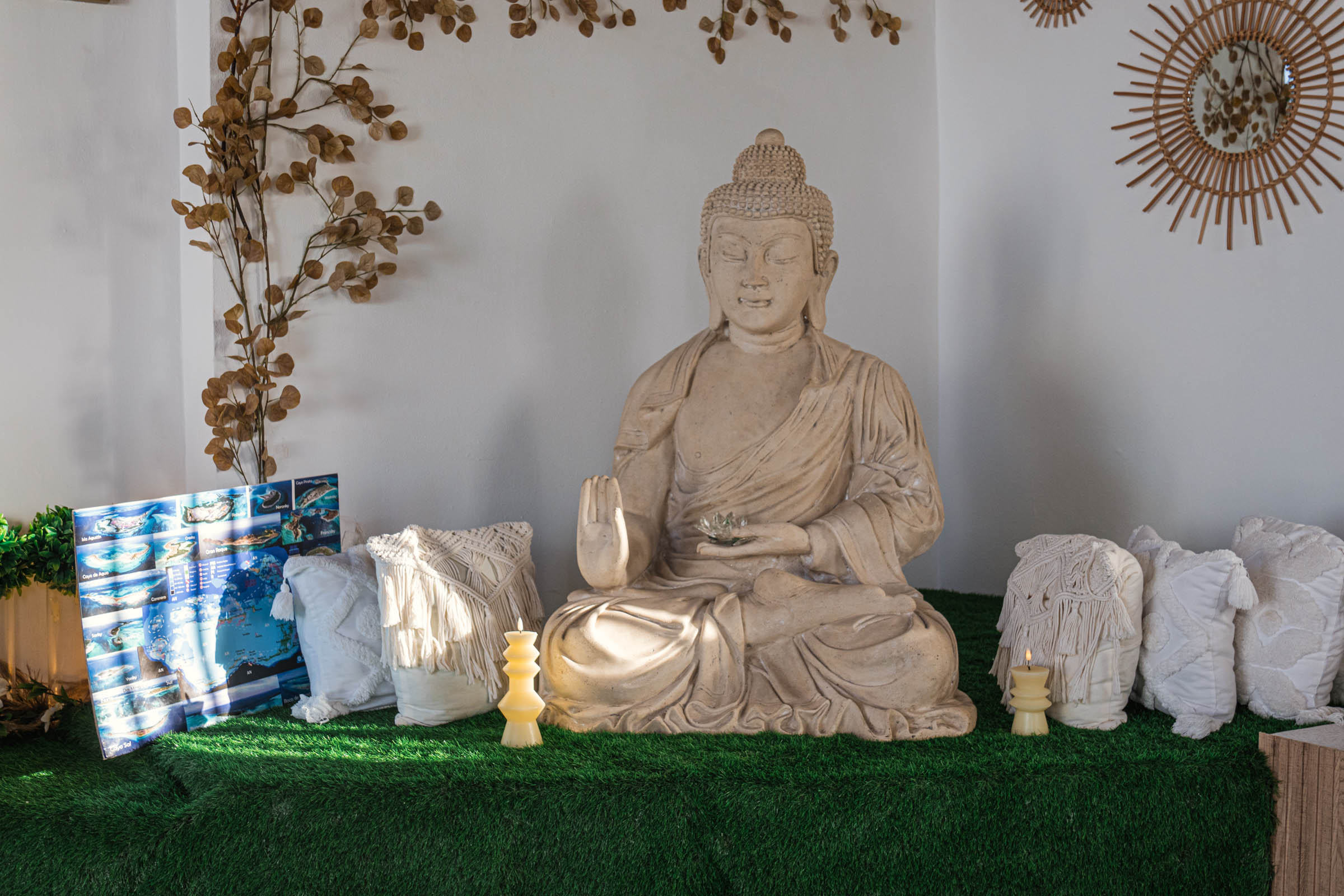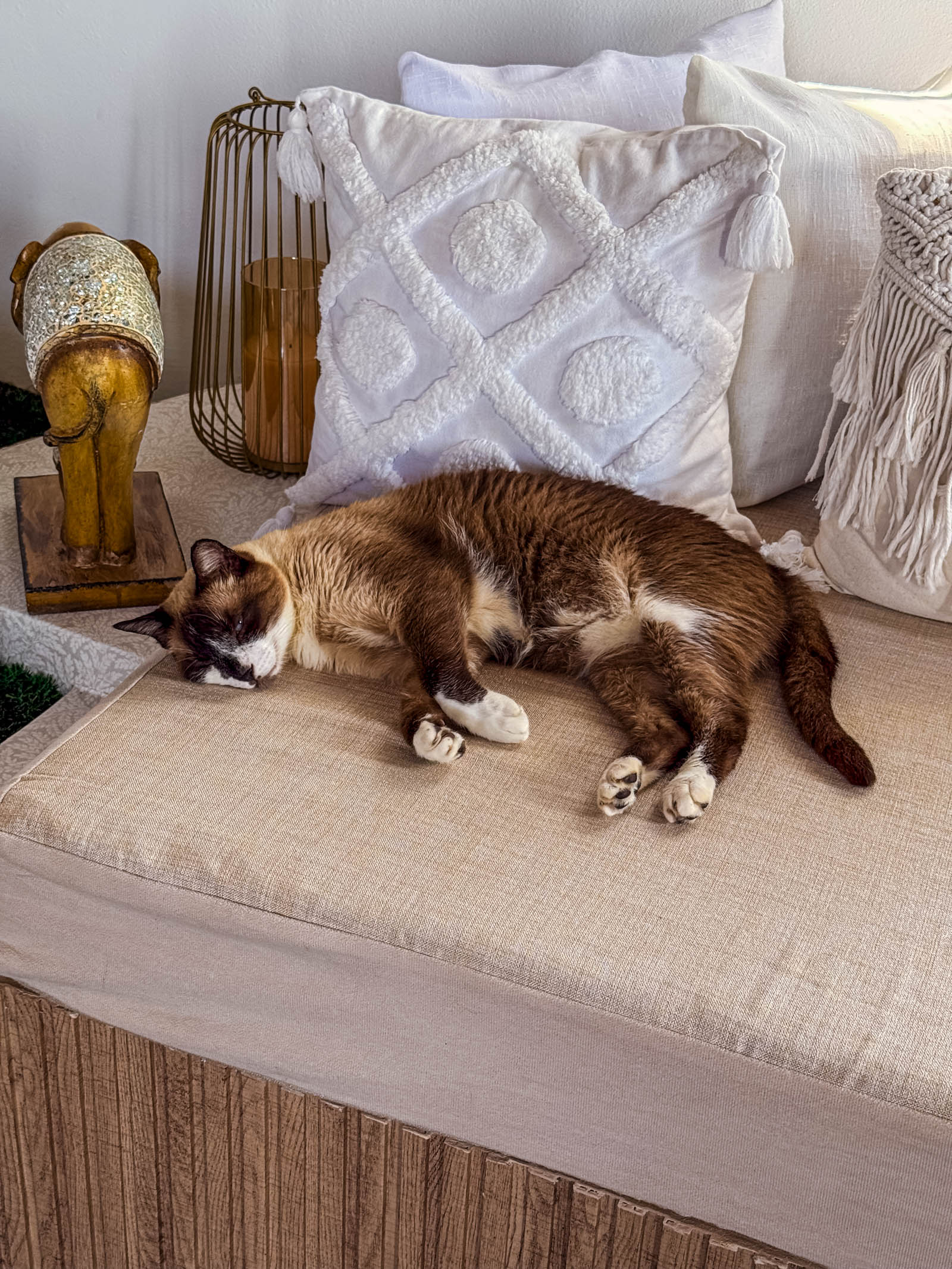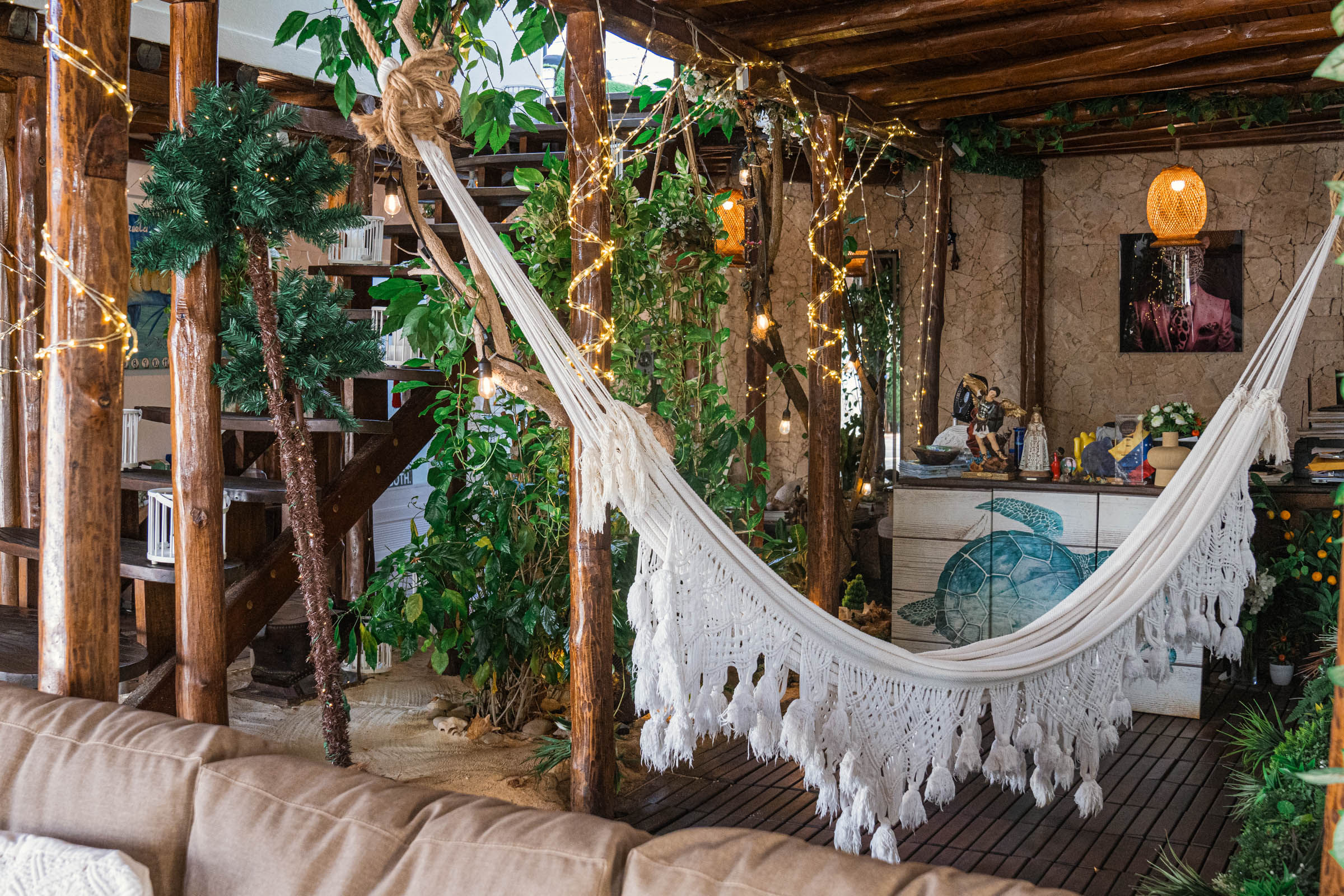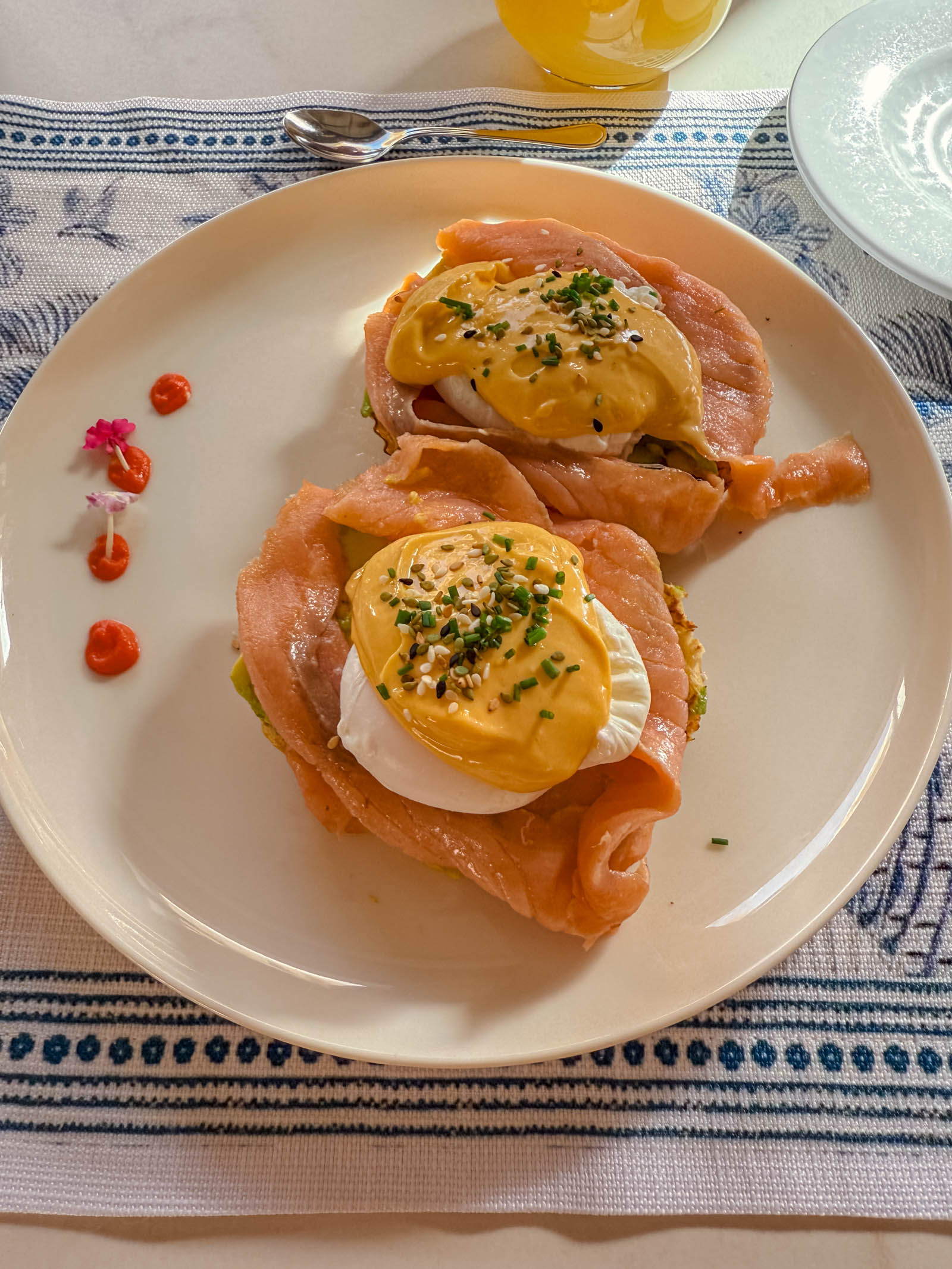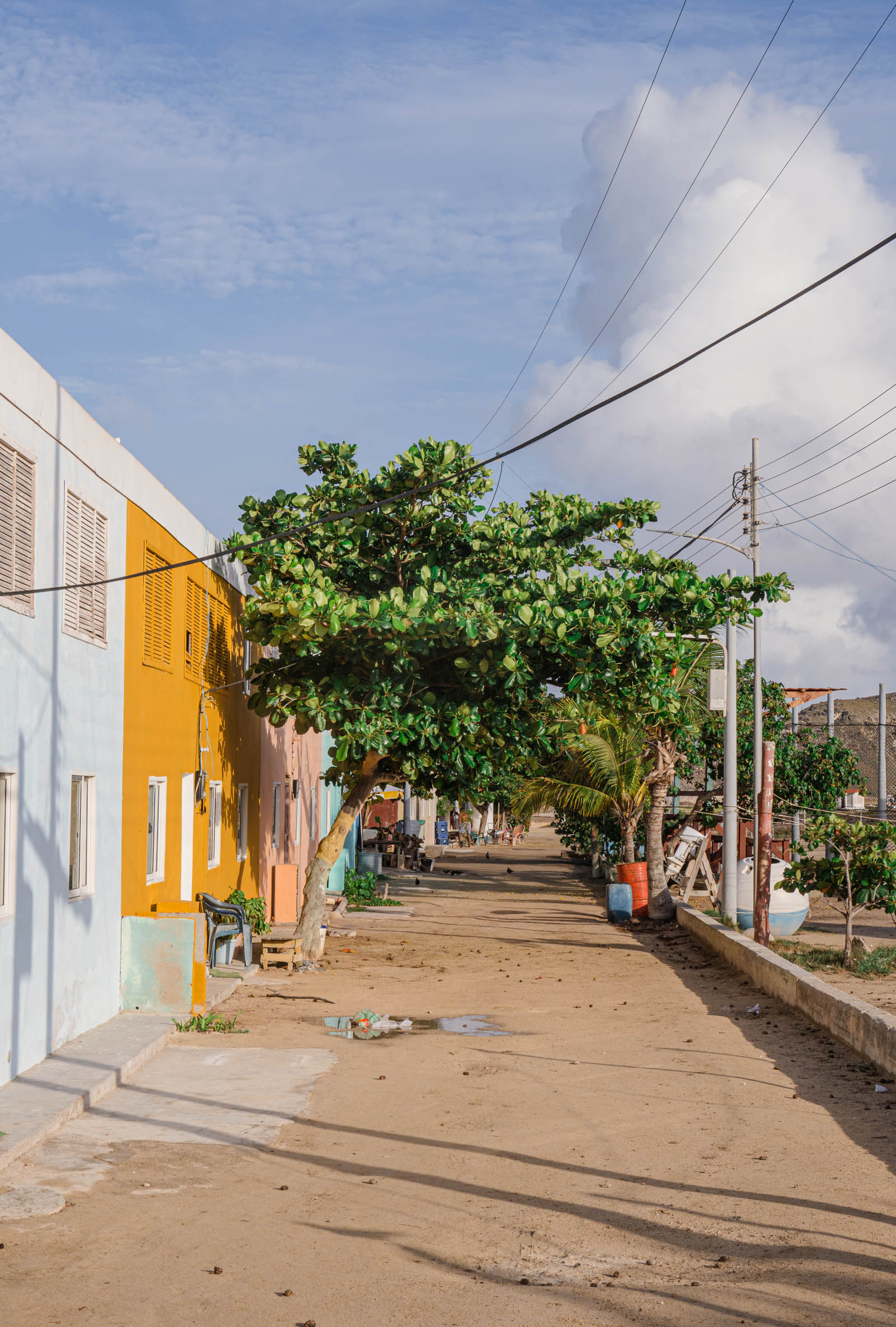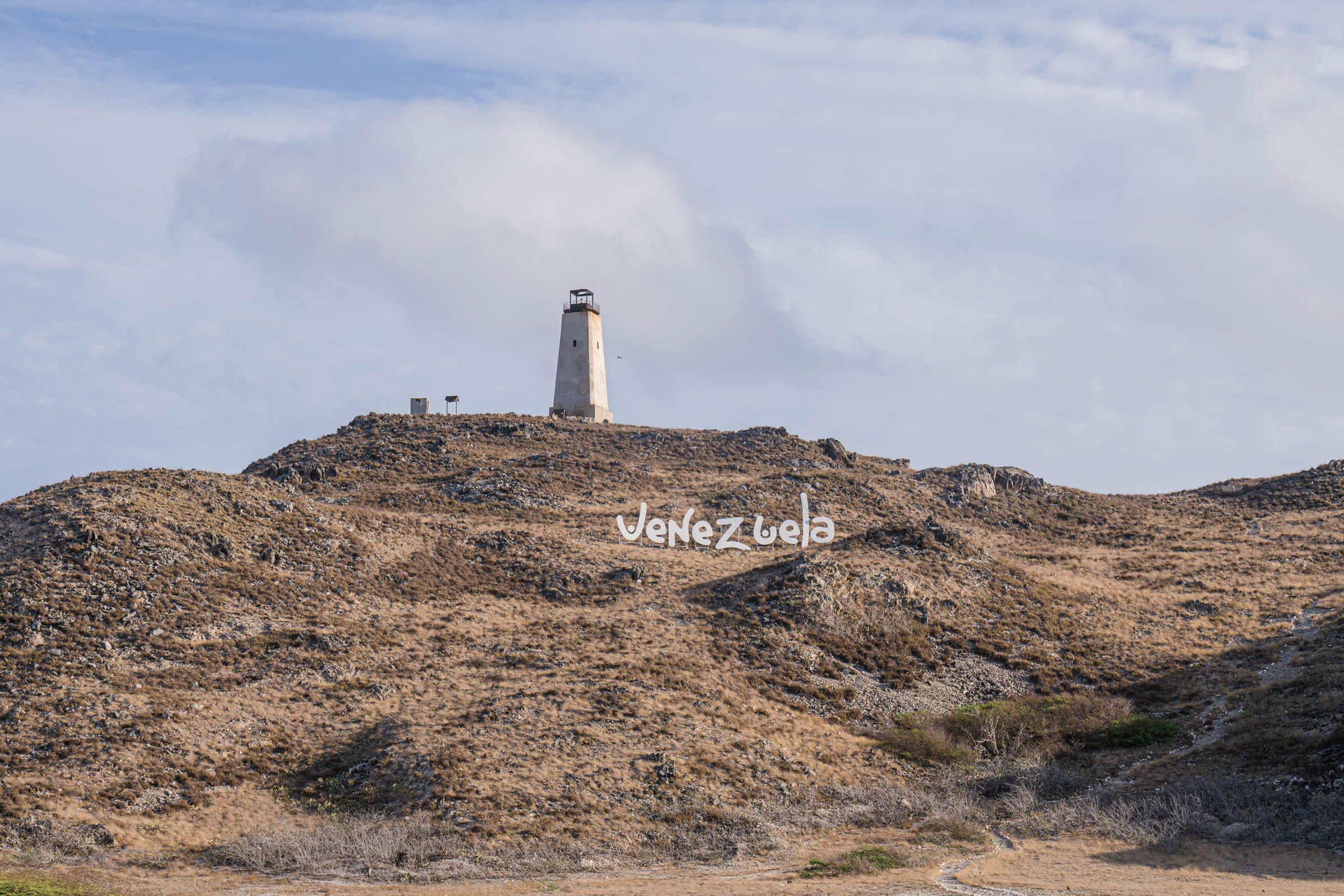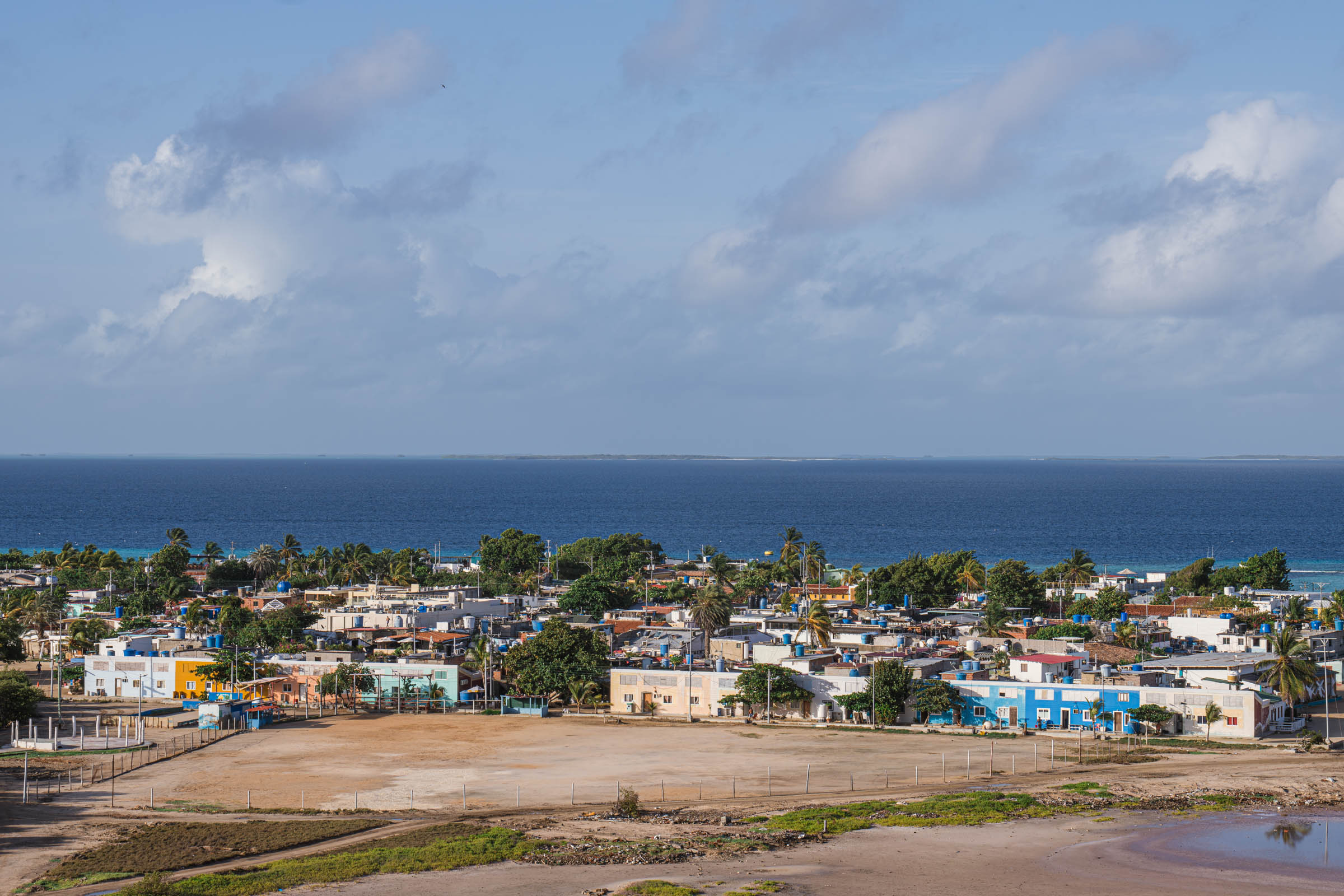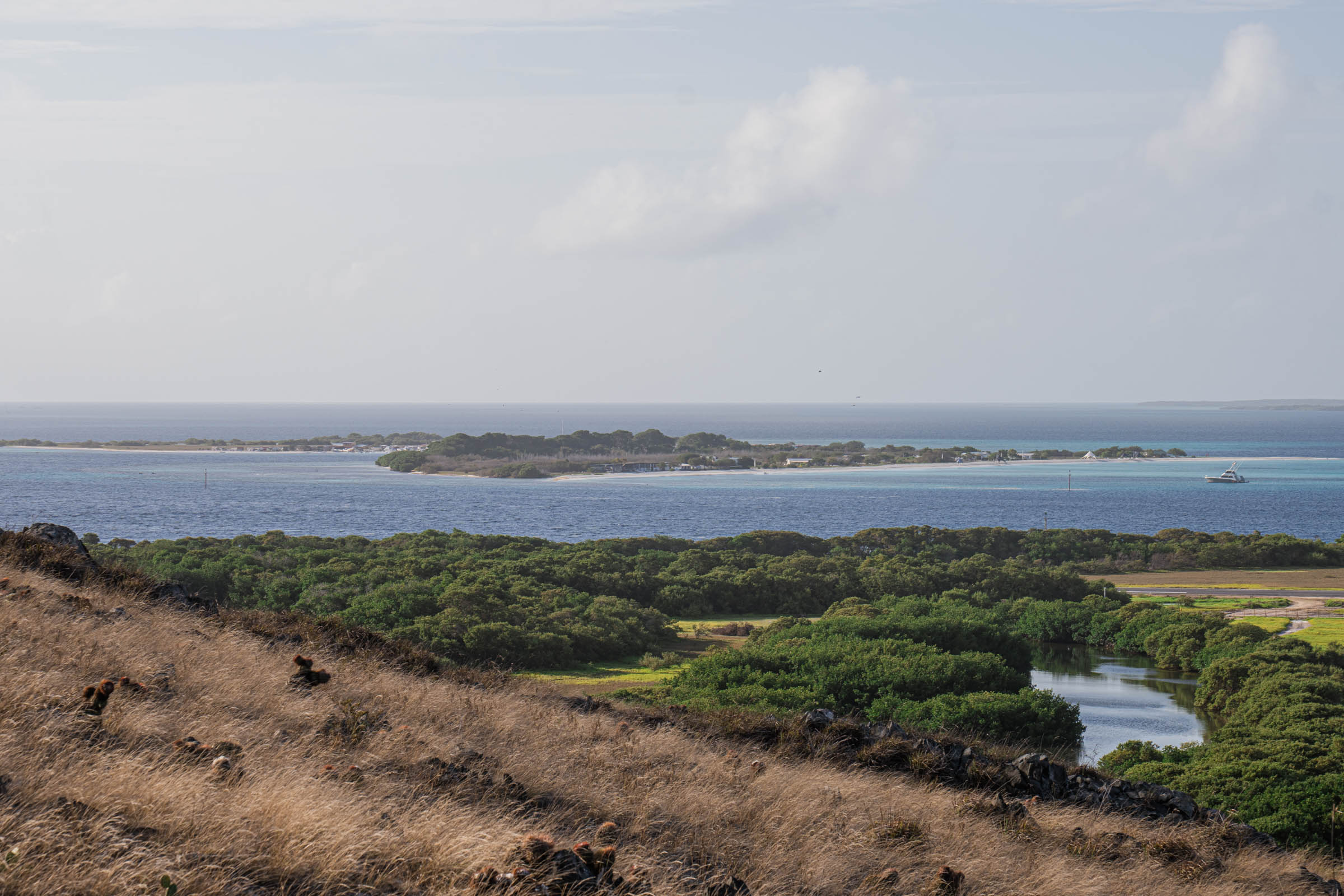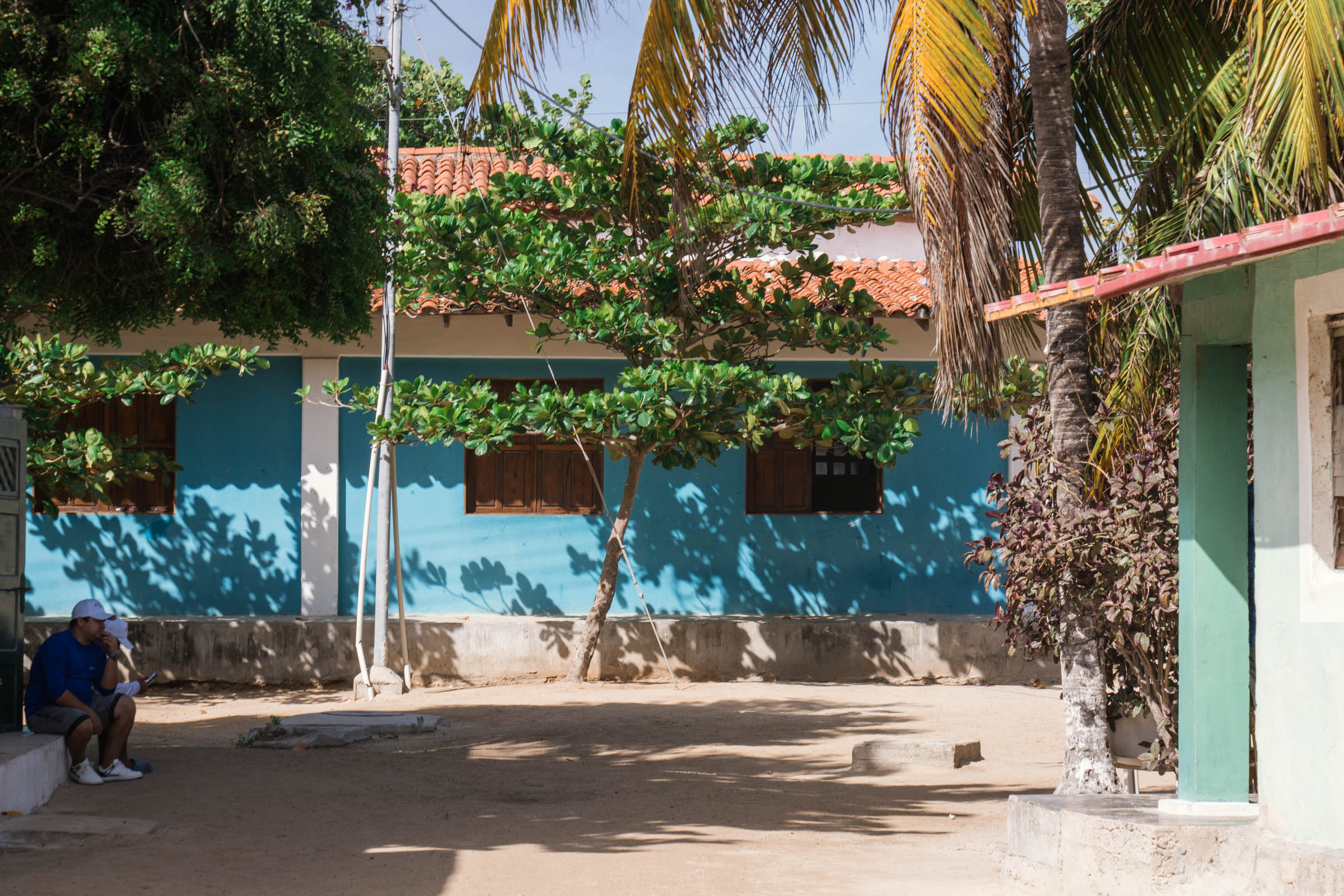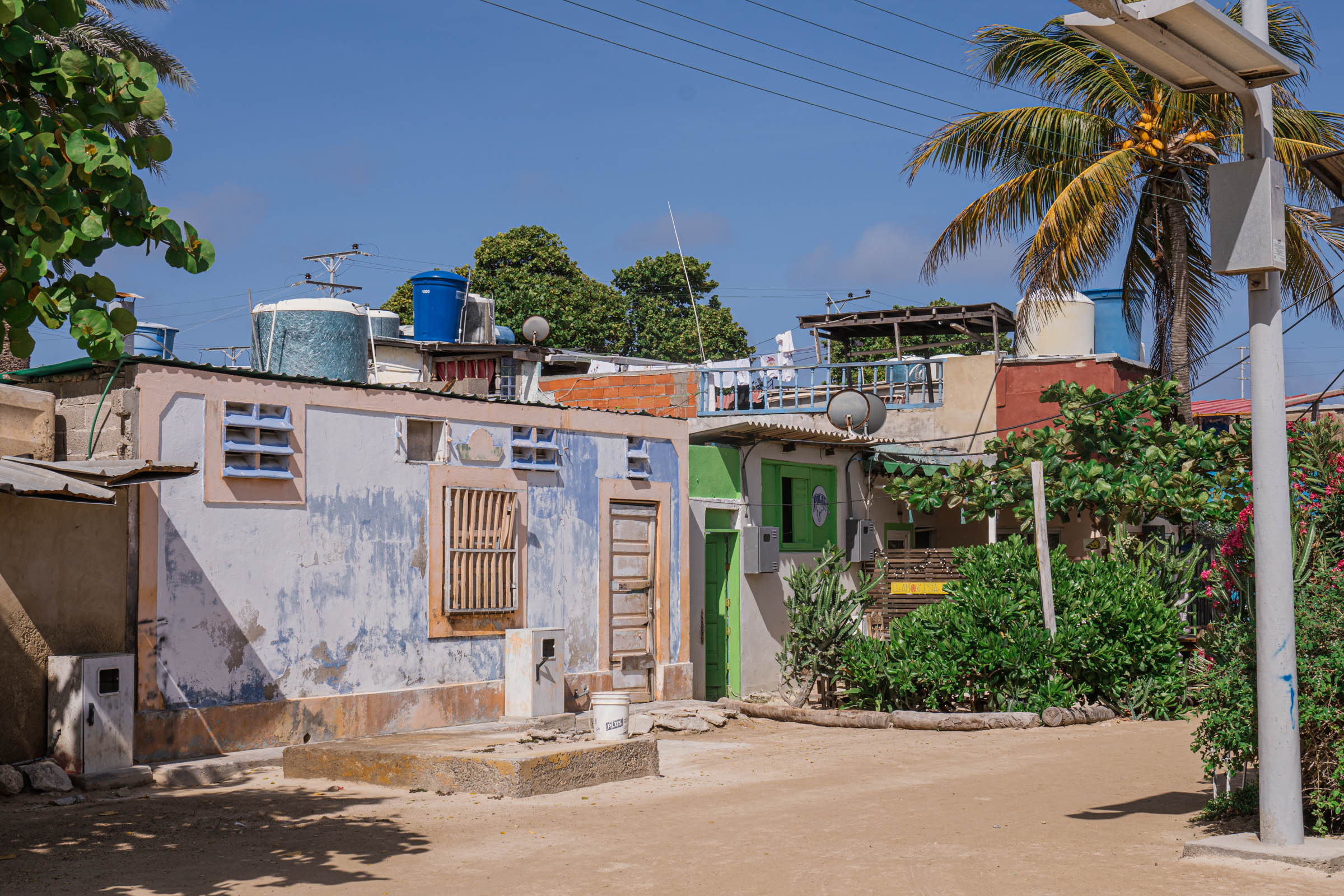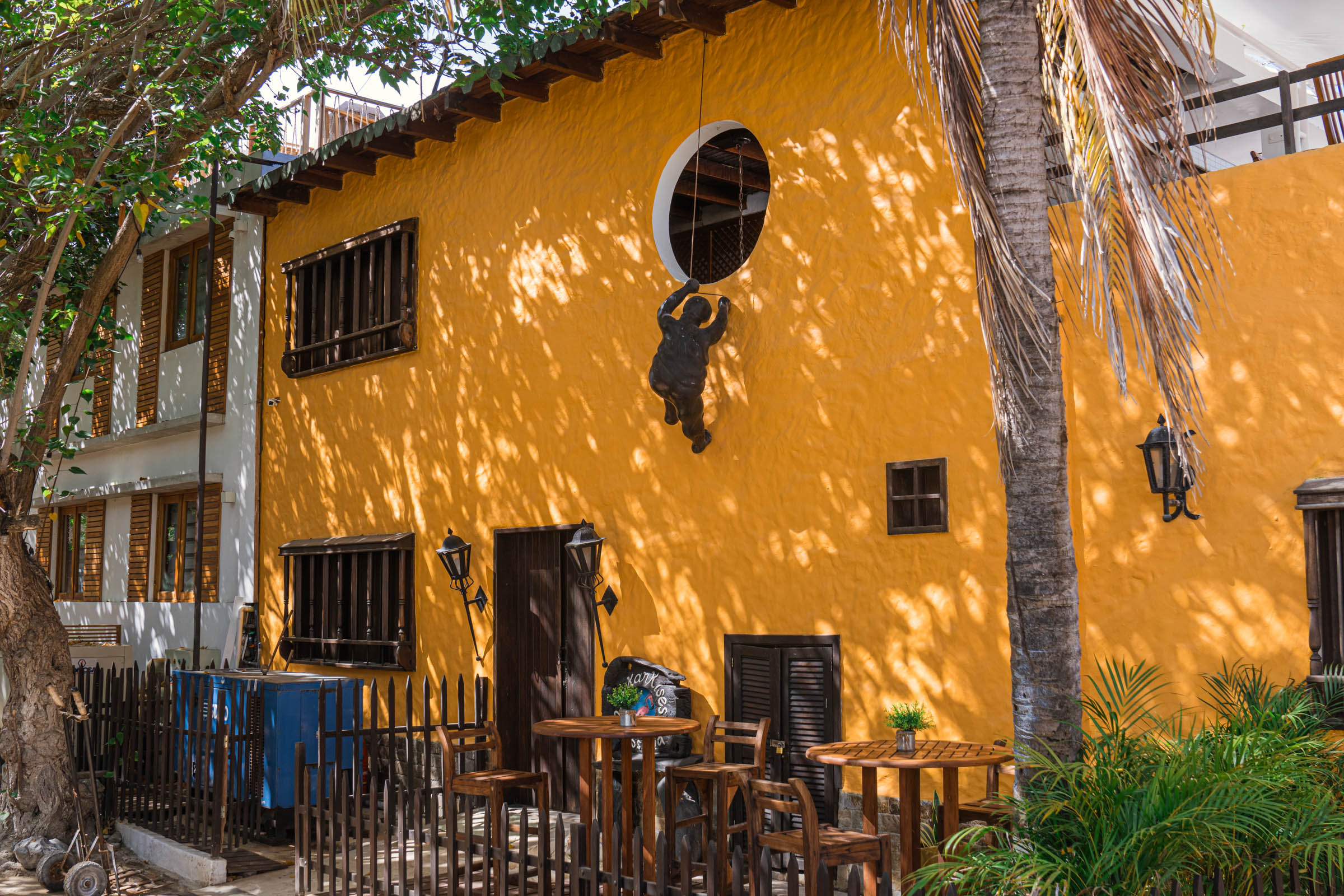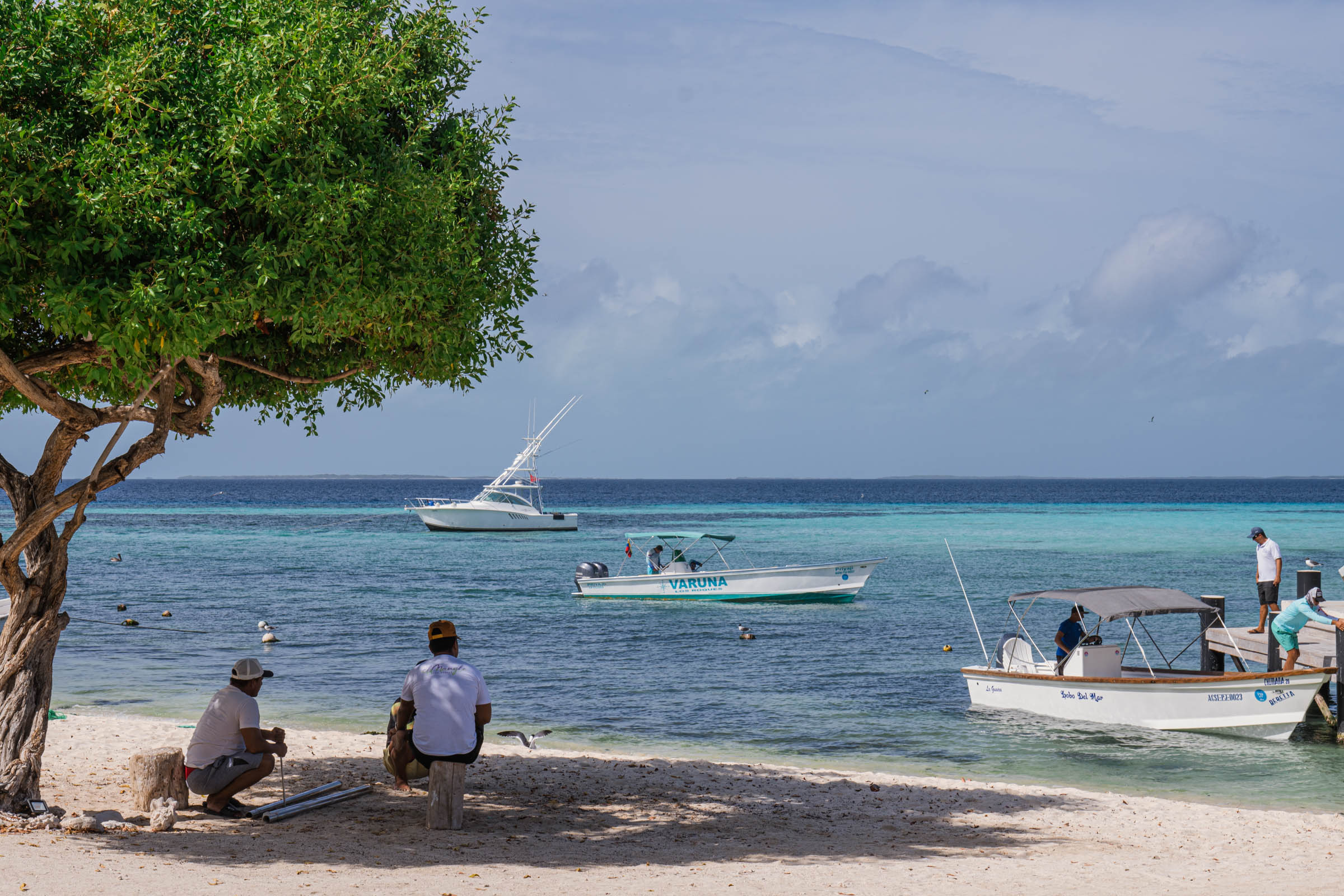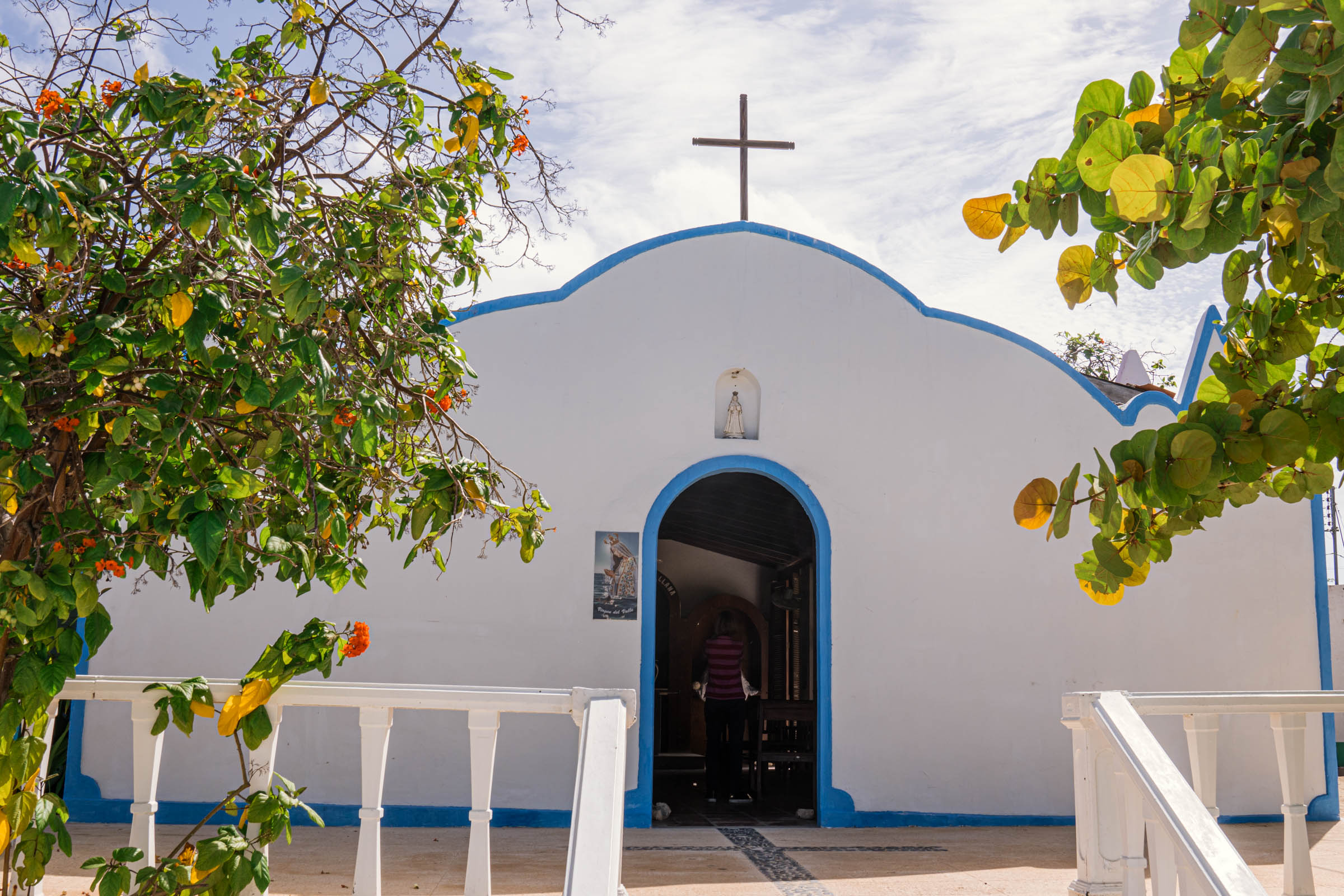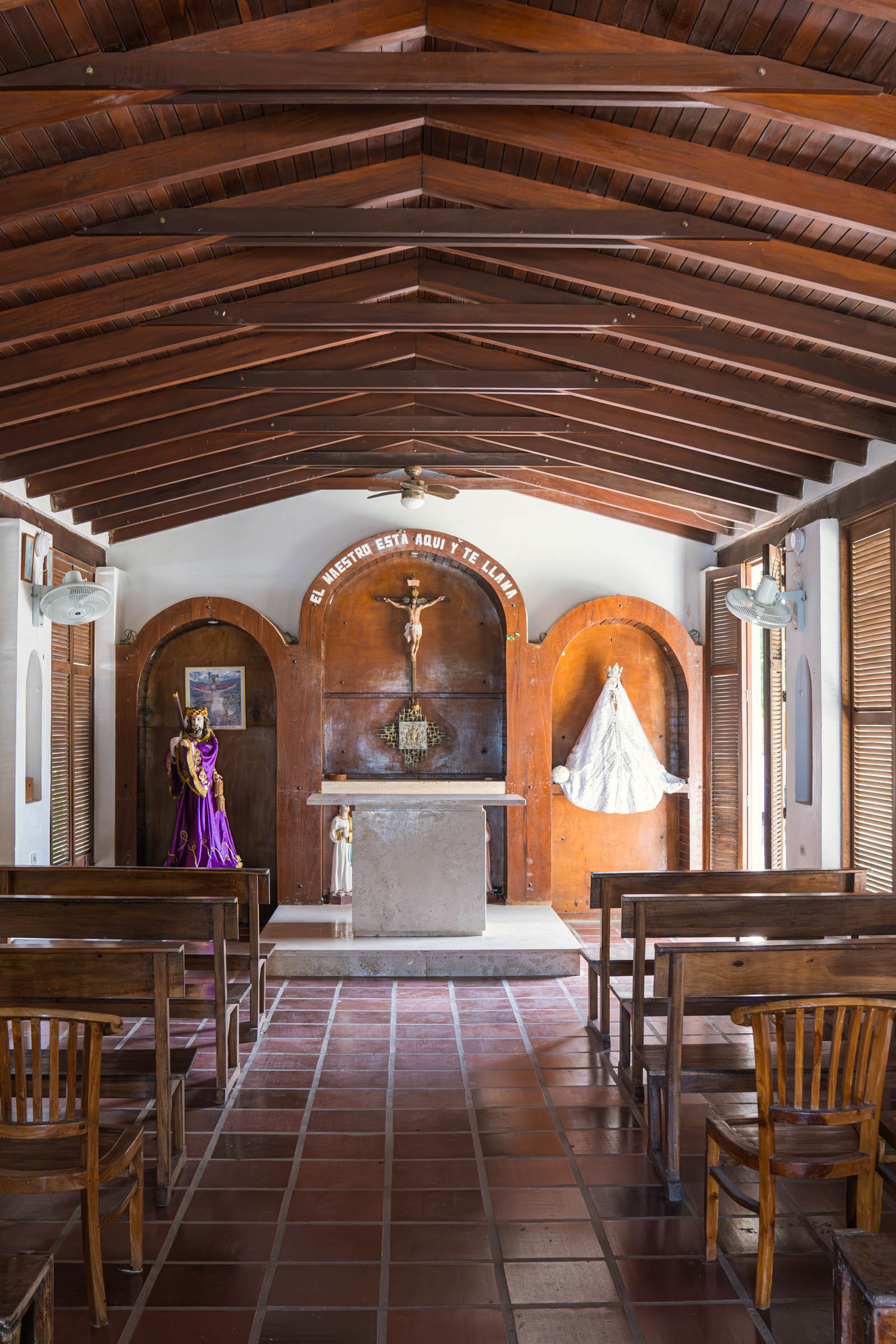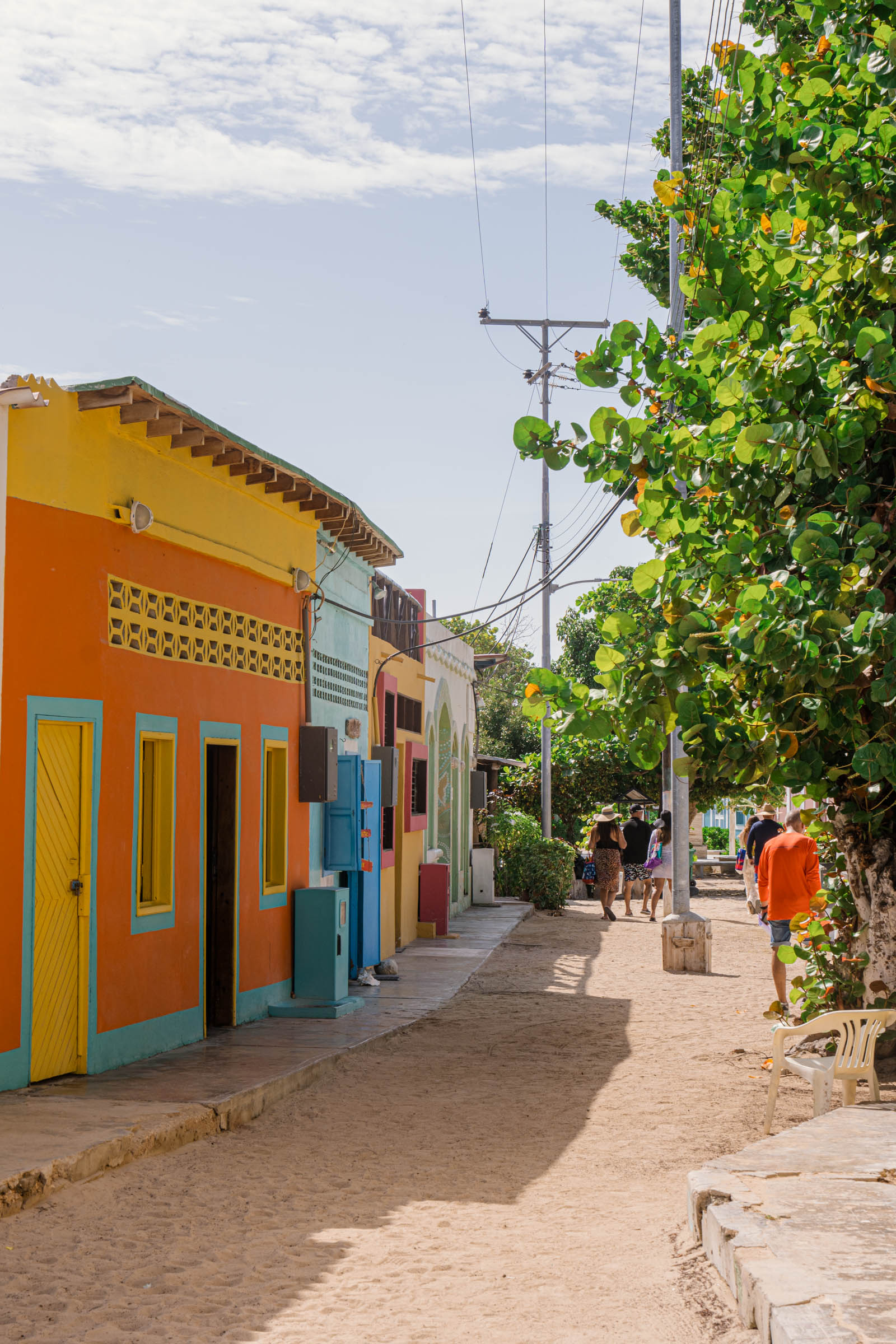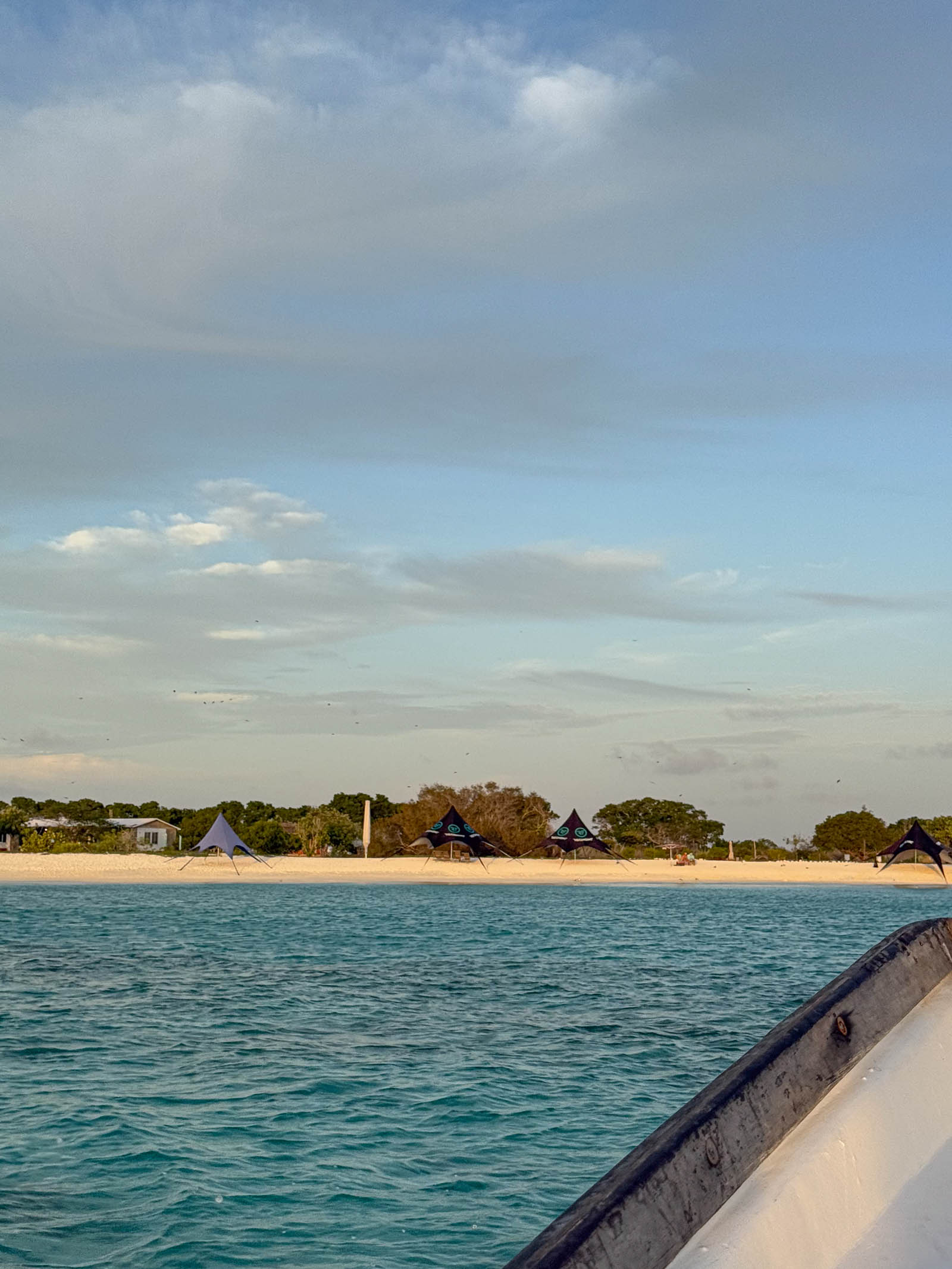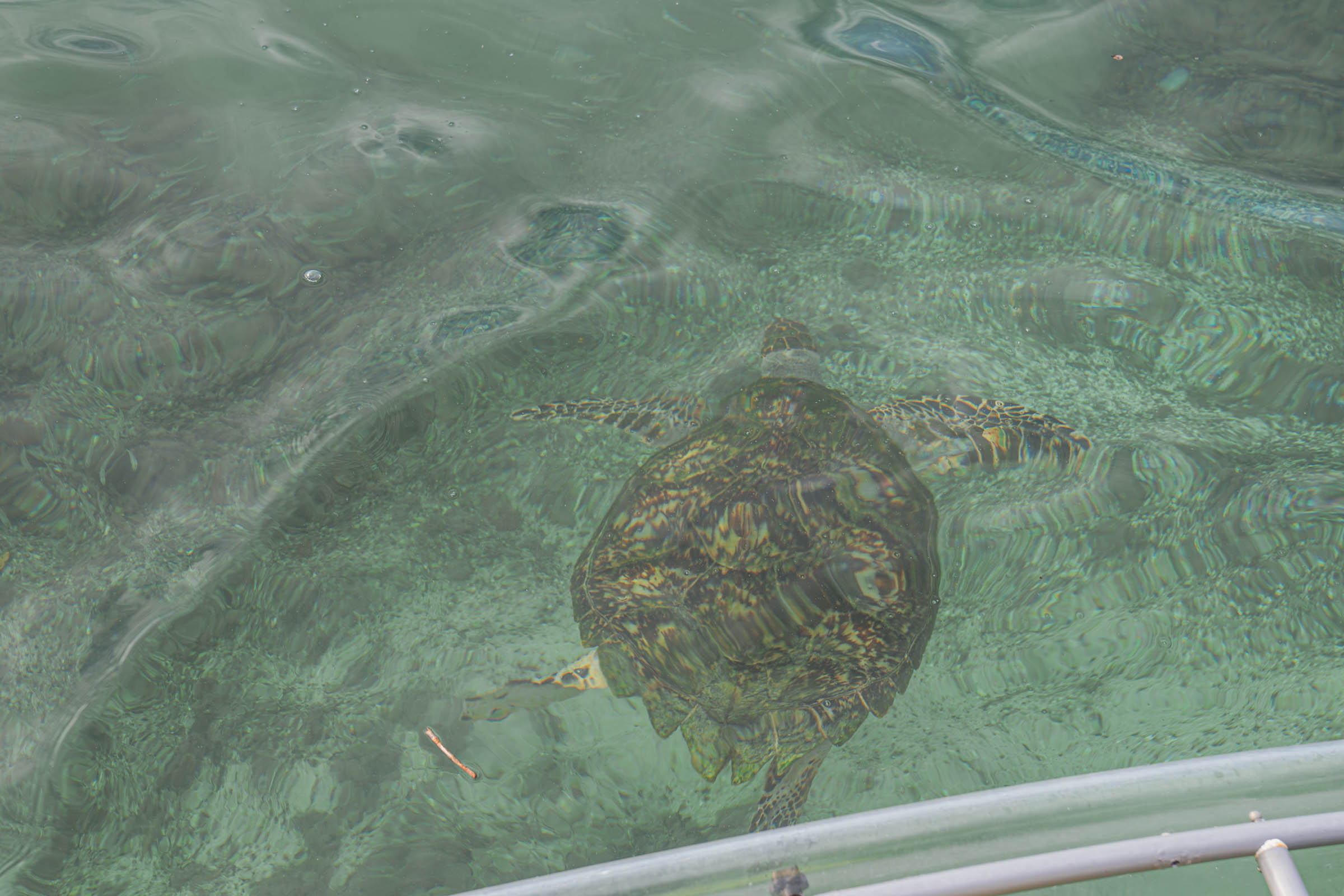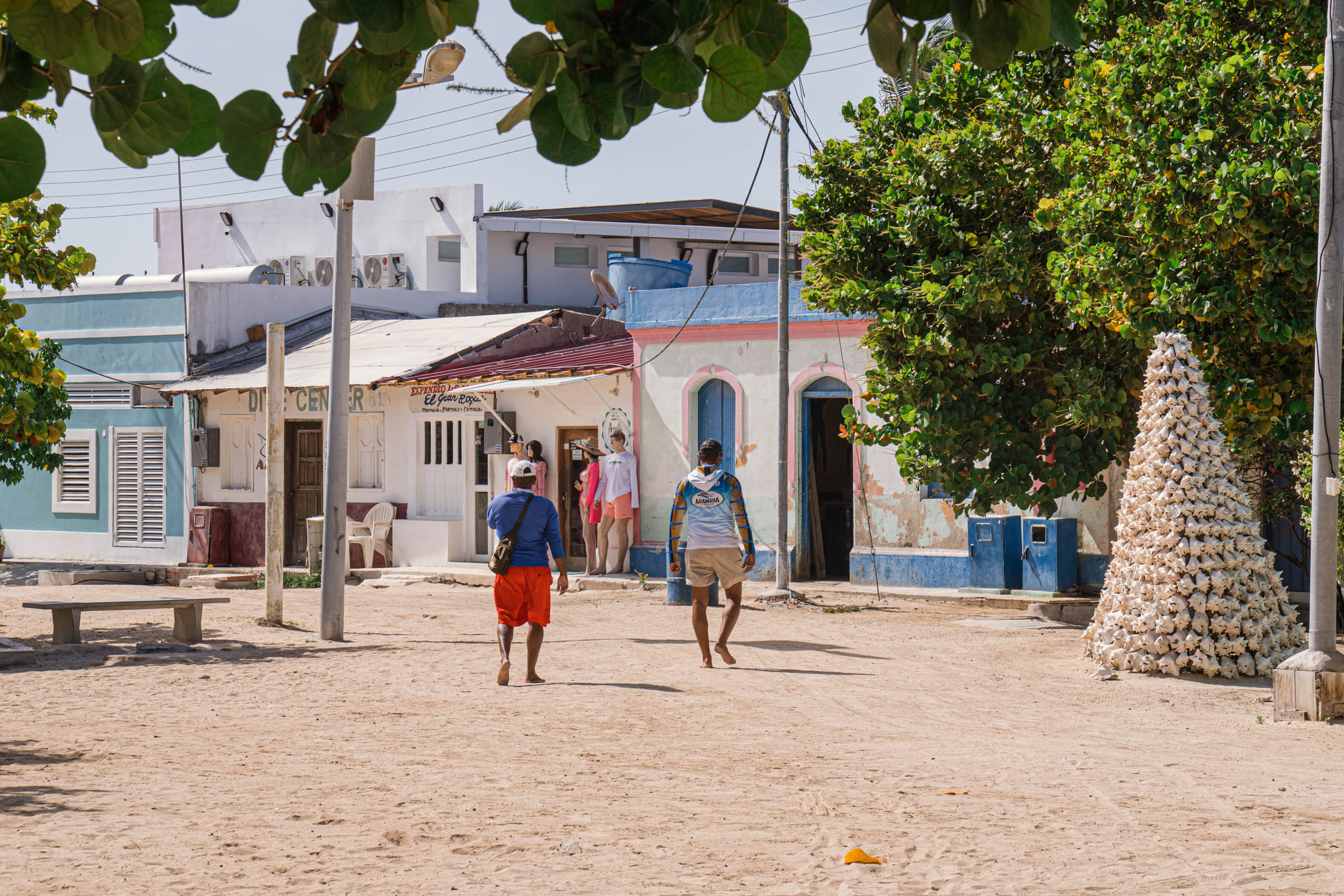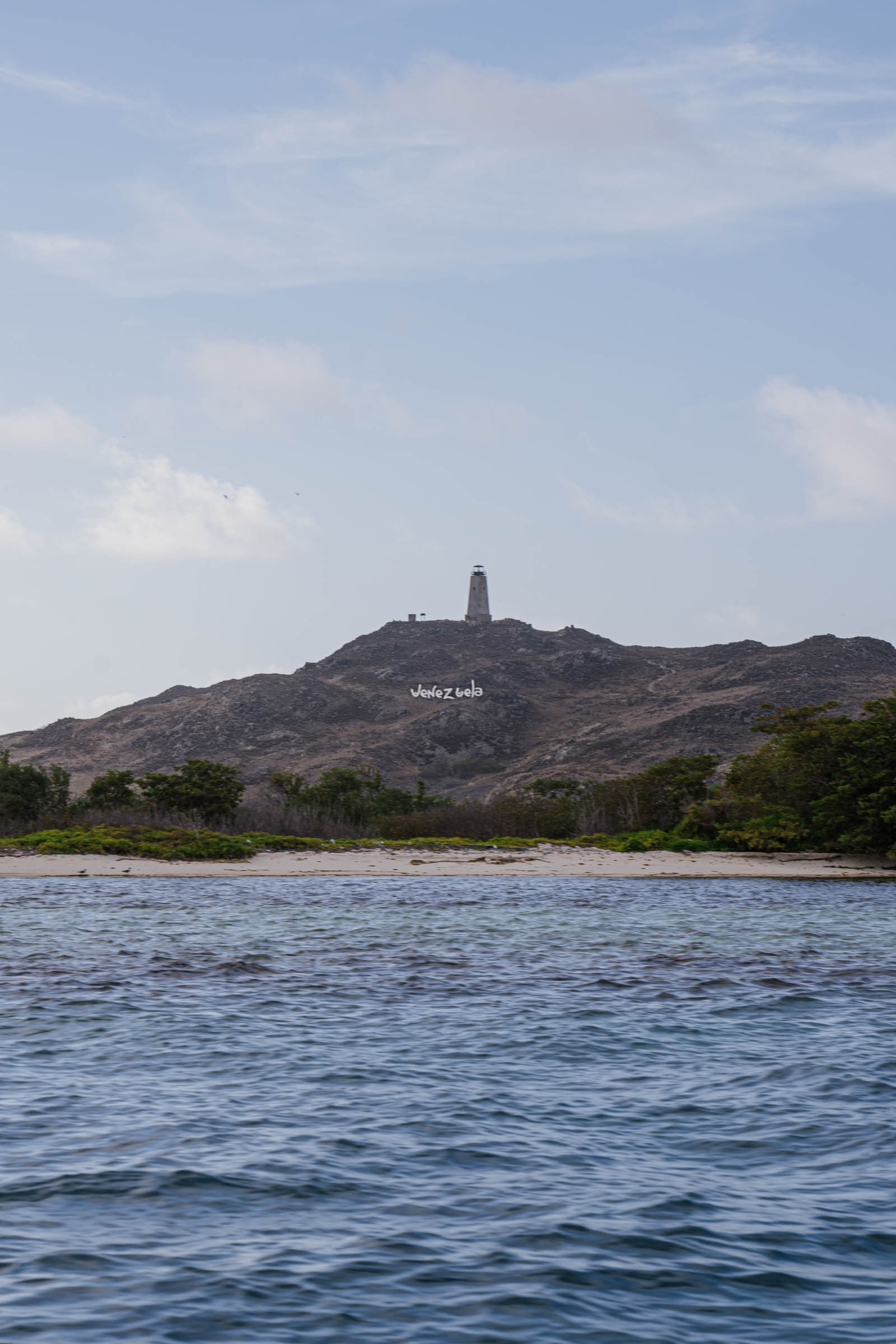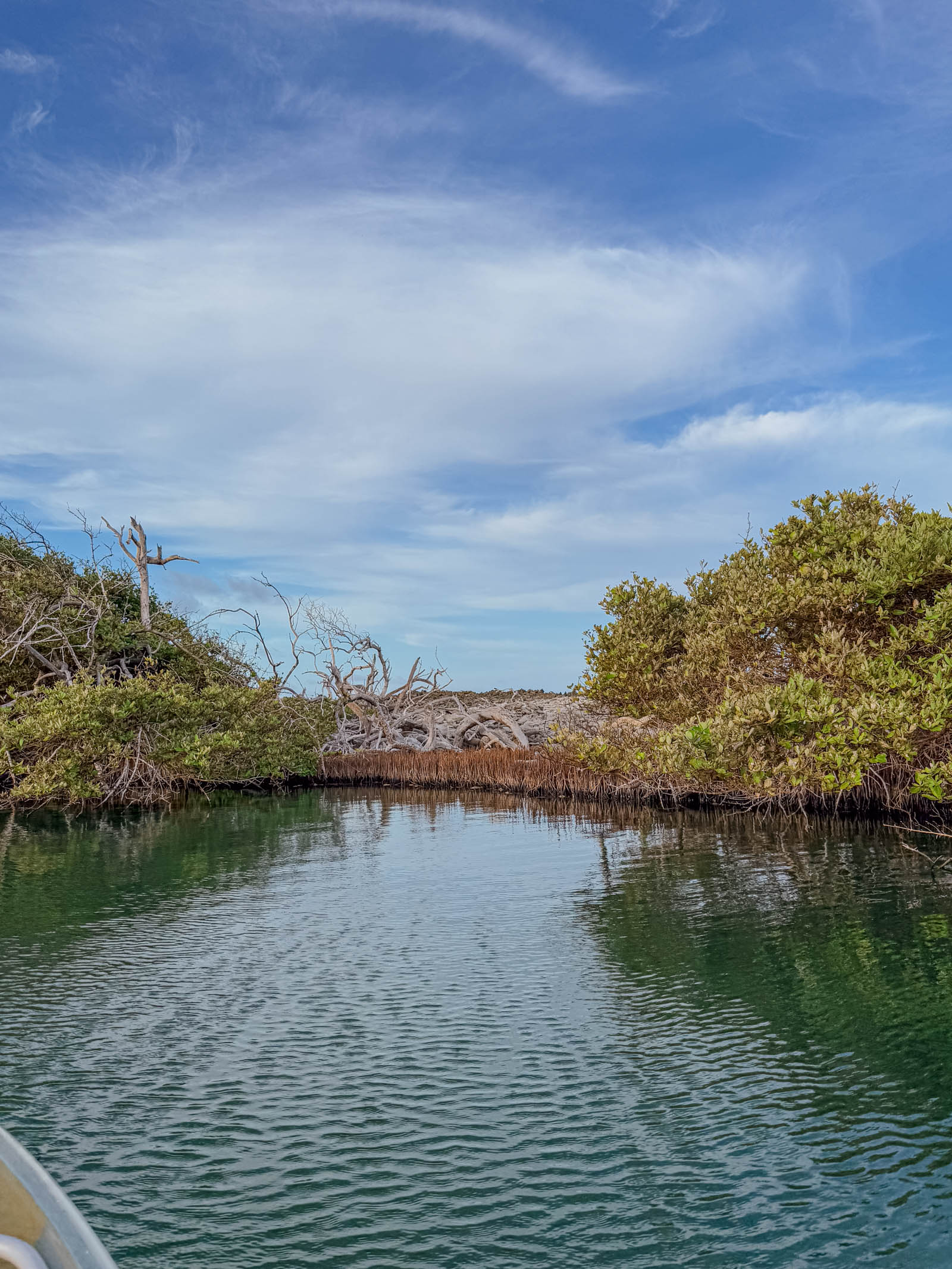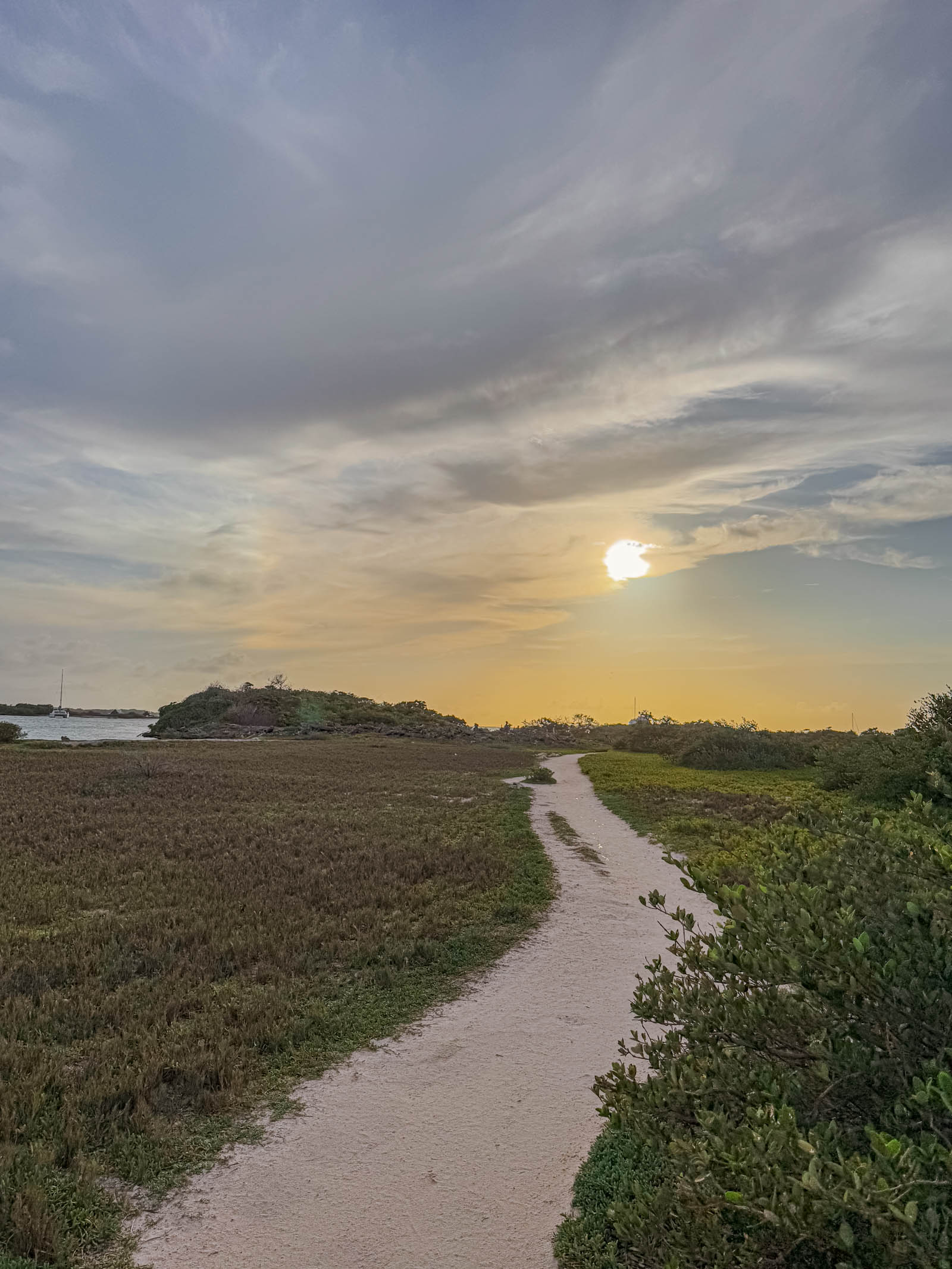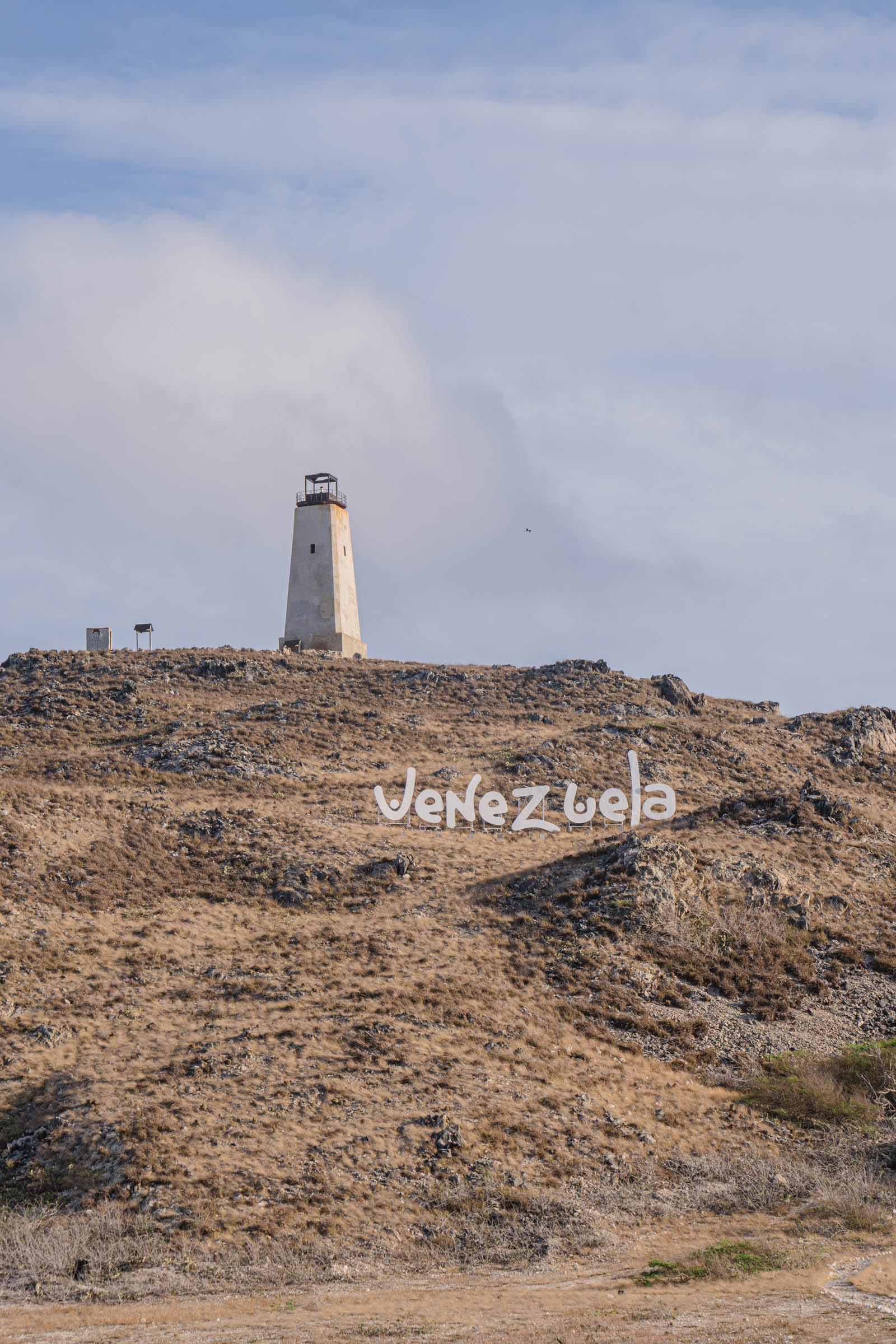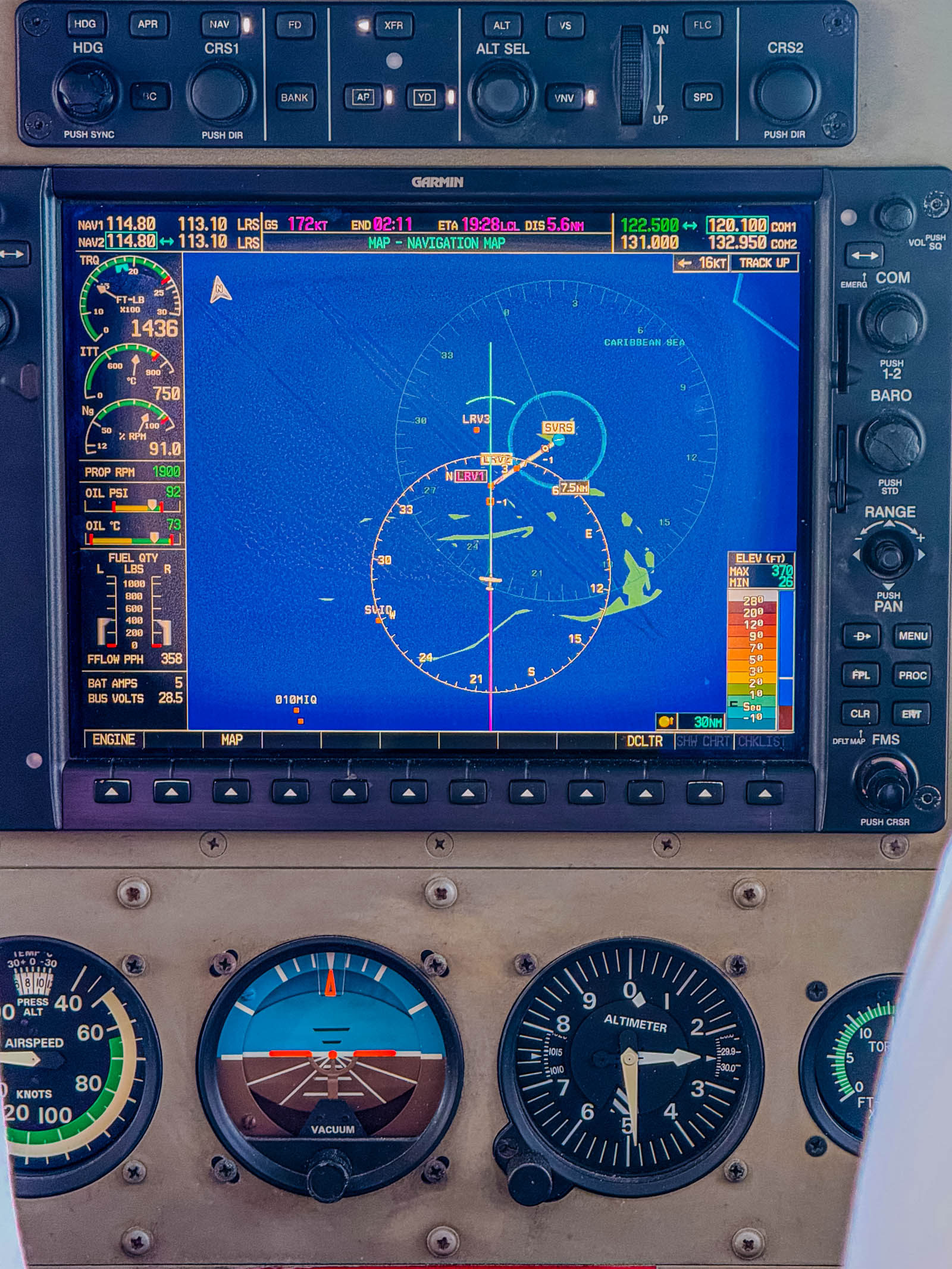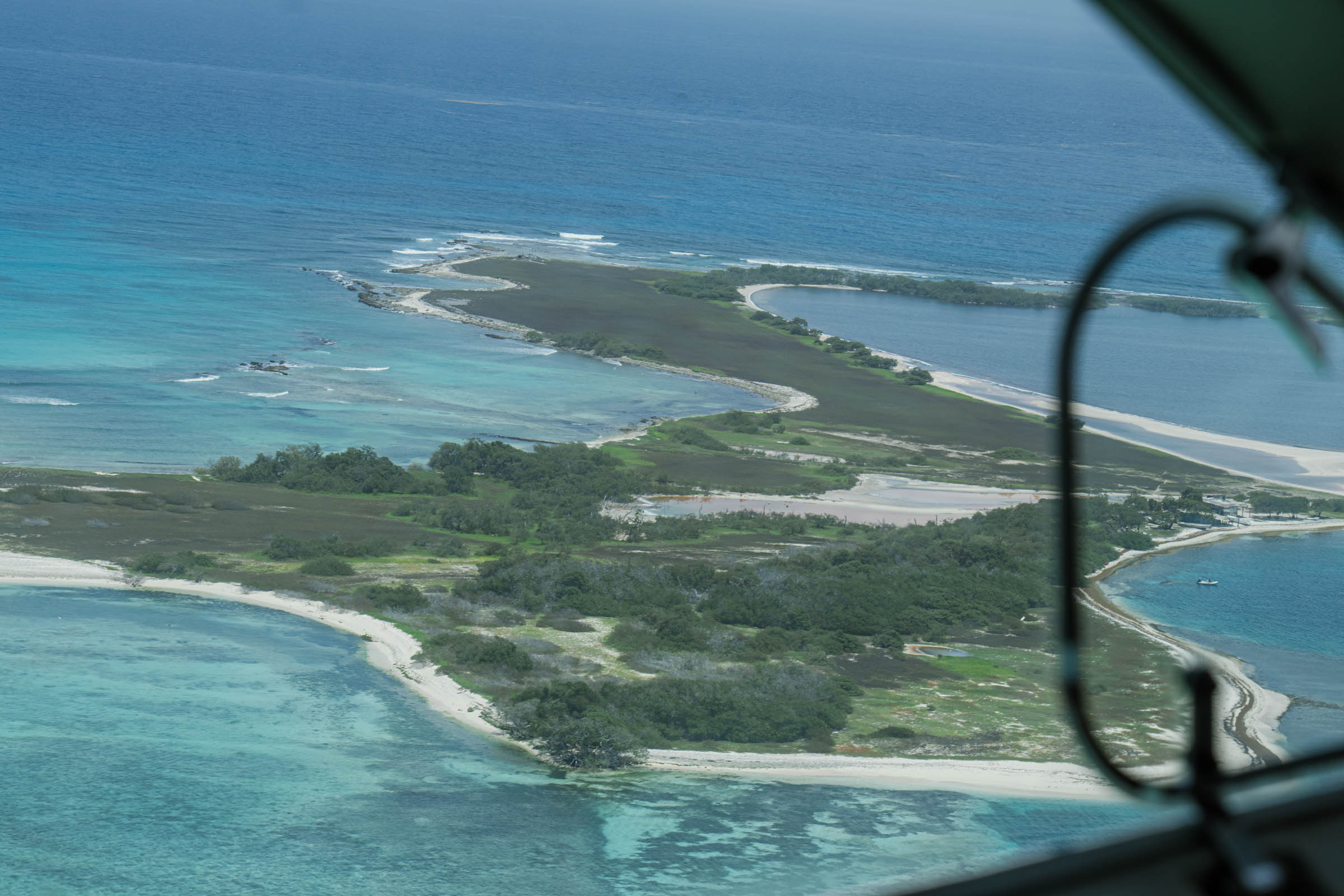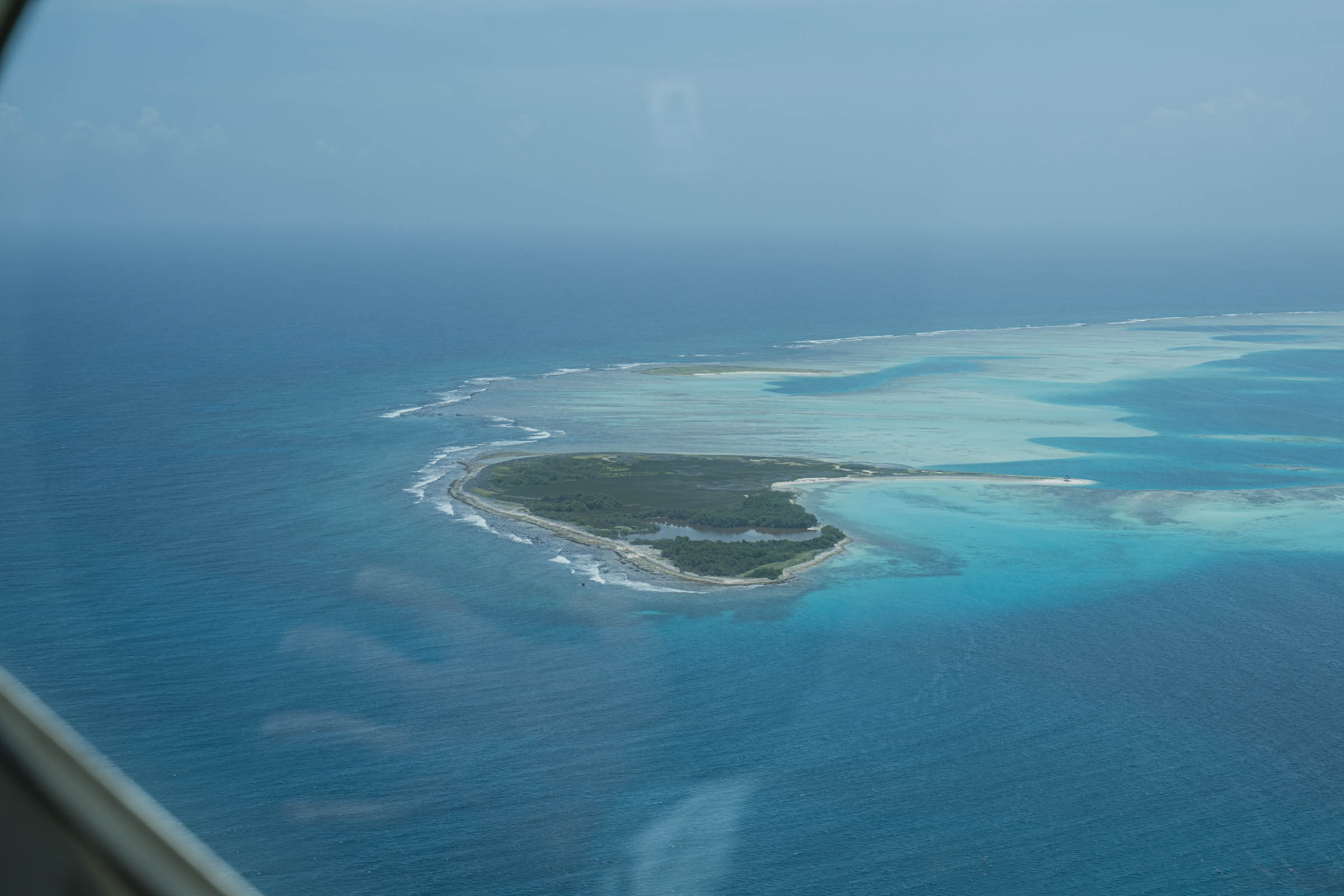My dear travellers and lovers of unusual journeys, welcome to the new series of travelogues on the Mr.M blog. During the previous months, you had the opportunity to get to know some of the countries of the unusual continent: South America, and during the month of September, I will show you the beauty of the country located in the very heart of this continent – Venezuela. At the very beginning of today’s travelogue, where I will try to convey to you the beauty of the Caribbean coral lagoons and the paradise for flamingos – Los Roques, I would like to thank the Ministry of Tourism of the Bolivarian Republic of Venezuela – MINTUR, as well as other partners who selflessly supported my adventure in Venezuela. With their help, travelogues from this exotic country were created, as well as numerous fashion stories that you will have the opportunity to read during this series of posts, and I sincerely hope that you will enjoy the new adventure.
Gran Roque is the only inhabited island of the vast Caribbean Los Roques archipelago, which has been declared a national park since 1972. I enjoyed the stories of our guide Antonio about the unbelievably beautiful landscape and colorful sea, but only in person did I understand what it means to “count the shades of blue and green” by the sea like watercolors. Fortunately, there are no large concrete hotels on the island, only small, charming wooden houses called posada (pensiona). This means that the entire archipelago is authentic, peaceful and practically untouched by nature.
Gran Roque is both administrative and the center of life in the archipelago, there is a post office, an exchange office (where you can exchange euros and US dollars), several markets and a police station. On the island during the day, you can see locals walking around smiling with hats and sandals, because there are almost no cars, the island is so big that you can walk across it. In the evening, under the lights, real life on the island begins: light salsa music can be heard from restaurants and bars and there are a lot more people on the streets. Life here is slow and relaxed, the atmosphere is tucked away.
Getting there is easy, flights from Caracas take about 35 minutes. Upon landing, you immediately realize that you are away from the noise and crowds, no one is rushing here. The new runway, opened in 2019, has significantly improved flight comfort, and daily direct flight lines are gradually being established (for example, the Conviasa company has frequent connections with the island). When you leave the airport building, you are greeted by warm Caribbean winds and the smell of the nearby sea: walk only a hundred meters to the main dock, where the boats dock and all tours and excursions depart from there. This is where the adventure in this archipelago begins.
LOS ROQUES: BEACHES AND ISLANDS, A NATURAL PARADISE
The Los Roques archipelago has dozens of small coral “islands” with outstanding beaches and pristine sea. These are just a few you shouldn’t miss:
- Cayo de Agua (Island of Water) – perhaps the most famous beach of Los Roques. It is over a kilometer long, with extremely fine white sand and shallow turquoise sea that gradually continues into the width of the blue lagoon. The island is like a painter’s canvas: the beach slowly “sticks out” on the other side of the atoll. There are almost no buildings there, only sand, palm trees and the sea.
- Cayo Francisquí – a complex of small islands west of Gran Roques. It is always quieter there, especially at dawn and in the evening. The water is crystal clear and ideal for snorkeling: visibility is so high that colorful corals and schools of tropical fish can be clearly seen at the bottom. A special attraction is the underwater “monument”, the diving group placed a statue of the Virgin of Valle in the shallows.
- Madrisquí – several small islands directly next to Gran Roque, even connected by wooden footbridges. It is an easy “suburb” of Gran Roques, ideal for a relaxing day at sea. It has wooden boardwalks and wooden houses with swimming pools in the backyard of some crews, tropical palm trees and quiet beaches with mangrove trees behind. The beaches are shallow and calm, according to the story of the natives, local fishermen used to sit here and fish for breakfast. We went by excursion boat and almost waited for the sunset, while some people were grilling fish on an improvised grill. A true idyll!
- Los Canquises – a group of islands south of Gran Roque, far from the mainland. It is the part of the park with the strictest protection. Daily excursions don’t stop here, but I was lucky enough to watch hundreds of pink flamingos foraging in the shallows, just like I remember from the documentaries. Swimming on Canquises is not allowed, the main reason is precisely the flamingos and the mangrove kingdom they protect, but the view from the boat is wonderful. If you drive towards them in the early evening, often hundreds of birds return to roost.
- Carenero and Sal – Pirate Isles Carenero and Sal Island (Cruise) lie west of Madrisqui. Carenero is famous among kite surfers for its constant wind, so we saw sailors and kite surfers practicing the wind there. Sal Island is a small atoll with a beach of white sand, no more than a kilometer long. To us, it seemed like a wonderful stage for photos, surrounded by a crystal sea, with wooden bridges connecting it to Carener. There I climbed to the top of a small lighthouse (the old Caribbean type) and took pictures of the endless blue sea.
Each tour between these islands offers views of coral reefs and diverse seas. You should always have your diving equipment and mask handy, because the water is so clear and rich in fauna that you will discover new colorful encounters (colorful fish, rays and cuttlefish) every day. According to local guides, Los Roques has one of the best-preserved coral systems in the Caribbean, so it’s no surprise that this is the main asset of this park.
LOS ROQUES: WATER ACTIVITIES AND ADVENTURES
Los Roques is a paradise for all water-loving adventurers. Here are the activities I recommend:
- Diving and snorkeling: Many travelers come for the marine life. There are several dive centers that offer tours, you can often see sea turtles and colorful tropical fish among the corals. At depths of 15 to 25 meters under the sea, there are various coral reefs where turtles live. If you do not have a diving license, snorkeling tours are often organized. I tried snorkeling at Cayo Francisquí, the water is amazingly clear, so it felt like the fish were swimming freely around me.
- Sailing and kitesurfing: The wind here is almost always blowing, so the lagoons of Carenero and Carpintero are famous places for kitesurfing. We saw sailors and kite surfers already in the morning rushing over the water. Local crews and clubs rent sailboats, boards and kitesurfs for beginners and advanced participants. The more experienced can pay for a full day of sailing on the atolls, with a break for swimming and a picnic on the beach.
- Fishing: Many tours also offer fishing trips. You can fish in the shallows, and there are also half-day trips to greater depths. Although we didn’t try it, we heard that upon returning, fresh fish or tuna is delivered, which is being prepared for dinner. Fishing tourists boast that Los Roques is a fishing paradise, and according to our guide Antonio, it has the best tuna in the world.
- Kayaking and guided tours: Many crews rent kayaks and canoes. Kayaking in the crystal sea offers a special peace: you will often come across shells or even starfish close to the shore. We paddled past the mangroves and saw griffon gulls and cow herons. Evening leisurely kayaking can be the perfect way to fill the day, with the incredible colors of the sunset and the smell of salt.
- Bird watching and nature: The island is a haven for birds. Especially famous are the pink flamingos on the Canquises Islands, which you can see from a distance (swimming is prohibited because of them). We often encountered sea gulls and herons on the shallows. Even a simple walk along the beach can lead to an encounter with one of the dozens of bird species that live here. One evening boat tour around the atoll made the sunset even more magical, seagulls flew by the boat and the water was calm and warm.
All these activities can be easily booked through your crew (hotel) or at the local tourist offices on Gran Roque. Most tours are paid for in cash on the spot. I advise you to book diving or sailing in advance, because during the season the places fill up quickly, especially in the popular months (July, August, Christmas and New Year tours).
WHAT TO EAT IN LOS ROQUES?
Food and Drink: Local Dishes
Venezuelan Caribbean cuisine permeates Los Roques, with a strong emphasis on seafood and tropical fruits. Meals usually come directly from the local catch: fishermen bring fresh lobsters, octopuses and fish, and restaurants serve them in various varieties. Here’s what you should definitely try:
- Arepas for breakfast – An arepa (thick cornbread) is a classic Venezuelan meal. At almost every breakfast, you get a real colorful plate: fresh fruit (melon, banana, mango) and a warm arepa filled with fried eggs or homemade cheese. I remember that every morning at Posada Galopagos they brought us plenty of fruit and warm scrambled eggs in an arepa, along with freshly squeezed juice. That breakfast provides enough energy for an active day full of exploration.
- Fresh fish and seafood dishes – The main specialty is lobster (langosta), which is served in almost every restaurant. The most famous is Rancho de la Langosta on a nearby island, where lobsters are caught from the sea and immediately grilled. You can often find arroz marinero (seafood paella) with octopus and squid and definitely fried fish (dorado, pargo) on charcoal. I enjoyed finishing it with rice and vegetables, the taste is gentle and melts in the mouth.
- Appetizers (mezze) – Ceviche (fish or shrimp marinated in lime, with onions and peppers) and crab empanadas are often served before lunch. In addition, strawberries with coconut and homemade mango or passionfruit jams are often served with pancakes.
- Sweets and Cocktails – To end the meal, don’t miss the tropical cocktails. Many bars serve coconut water or pineapple juice, and Piña Coladas and Mojitos made from local herbs are popular. I enjoyed it with a Margarita with a little salt and fresh lemons while watching the sunset, a real experience to remember.
A large number of restaurants are located on Gran Roque. For example, the Aquarena restaurant has specialties of grilled octopus and squid, Bora La Mar offers a variety of seafood dishes (paella, risotto and lobster), and the El Canto de la Ballena restaurant combines Venezuelan and Spanish cuisine. An alfresco dinner, accompanied by a gentle breeze and the sounds of a guitar, is the ideal end to a memorable day at Los Roques.
LOS ROQUES: WHERE TO STAY?
There are no large chain hotels on Los Roques, but stays are booked in private guesthouses (posadas), which usually have a dozen rooms. The price varies by property, but for mid-budget, count around USD 80-120 per person per night. Some of the famous posadas in the center are Posada Piano and Tropicana, with pleasant rooms and pools. Travelers praise Posada Piano for the homely atmosphere and abundant breakfast with local fruits and eggs in arepas.
Posada Galápagos stands out for its luxury and number of amenities. It is the largest facility on the island, with 16 rooms (8 double and 3 four-bed, with a capacity of about 46 people). It is located on the main street of Calle La Laguna (center of Gran Roque). The rooms are spacious and modernly decorated, they all have air conditioning, a private toilet and a terrace with a view of the garden or the sea. The main attraction is the restaurant with a large garden and swimming pool. The kitchen is of high class, I enjoyed wonderful dinners where exceptional dishes were served from fresh local ingredients. We’ve seen menus with paella, stuffed lobster and daily fresh fish, it’s really top notch. An open-air bar with a view of the sunset and a pool in the courtyard complement the luxury.
The staff is very helpful, the owner Paula and her team take care of the details and the reception is available 24/7. This crew also offers Wi-Fi (satellite, for an extra charge), a swimming pool, as well as additional services (eg massages and private dinners).
These accommodations are more expensive (a double room is around $150-$200 per night), but you get the ultimate in comfort. I would recommend the Galapagos crew to anyone who wants to pamper themselves a little: comfortable beds, exclusive facilities and a combination of Caribbean and luxury.
ADVICE FOR TRAVELERS: WHAT TO BRING AND WHAT TO SAFEGUARD
Length of stay: Even if you’re in a hurry, don’t just plan a day trip. It is best to stay at least 3-4 nights or more if you have time. One day is not enough for many islands, I spent five days and used each of them for two tours. If you are here for less than three days, believe me you would regret it without seeing the beauty of the Caribbean in its full glory.
Pack smart: Lightweight clothing and swimwear are a must-have for your trip. The sun is extremely strong here, high SPF cream, a hat and good quality polarized sunglasses are a must. Since you spend most of the day in the sun and water, don’t forget to bring a light jacket or a blanket for your arms, the wind can get chilly in the evening. A diving mask and snorkel are recommended, because the underwater world here is amazing. Bring light slippers or flip flops to enter the cooler water or island rings.
Money: There are no ATMs (except exchange offices at the airport). Bring enough dollars (or euros) in cash. Payment on the island is mostly in dollars or bolivars. The Galápagos crew, for example, says they accept bolivars, while most tourist facilities convert dollars at the exchange rate. Be sure to bring more cash, consider spare change, as small exchange offices often have a change limit. Cards (Visa/Mastercard) almost never go through.
Internet and electricity: Internet is slow and is billed by the hour. The mobile signal is negligible, it is better to plan a “digital detox”. Crews have satellite Wi-Fi, but don’t expect speed. Carry a power bank if you want a little longer device life. The electricity is often turned off (most often after lunch, while the generators are charging). I recommend that you charge phone chargers and laptops in the morning, around 7-8 am the electricity usually works. After 1 p.m., if the crew has turned off the generator, there is no power until the afternoon.
Food and water: Tap water is not safe to drink, use bottled water. It is best to drink bottled water or drinks with a straw. Food in restaurants is fresh, but avoid unwashed vegetables and salads (especially if you are not used to it). It’s useful to bring stomach medicines (probiotics and diuretics) and eat apples just in case (the local climate and bacteria can wreak a bit of havoc on your gut flora if you’re not used to it or haven’t prepared your body before the trip).
Nature conservation: Remember you are in a national park! Do not leave litter on the beaches. If you are having a picnic or barbecue, bring a trash bag and put everything in the bins. It is forbidden to remove corals or shells from the sea, and throwing plastic bags is strictly punished. Also, don’t disturb the birds (especially the flamingos). Loud music is not recommended on the beaches, and camping without a permit is not allowed at all.
Organization: All tours are paid on the spot, by agreement, and group prices often vary. It is better to pay the whole package to the crew than to negotiate with local individuals. It’s cheaper if you share the costs in a group.
Stay relaxed: Every possible plan on the island can go awry, but literally! If a tour is canceled due to wind or bad weather, don’t worry. It happens here that sometimes a destination simply cannot be reached at some point due to weather conditions and bad weather. Always contact crew reception for an alternative. In the end, most of the charm of Los Roques is that you can plan everything spontaneously, but also adapt to the moment.
Photos and memories: Bring a good camera or phone for photos, because Los Roques is a paradise for all our senses. Every morning on the beach provides an opportunity for perfect photos and videos, and the sunsets are spectacular. We had a Whatsapp group with our guide Antonio and he shared with us his photos and the photos he received from the locals because they love to show tourists every place in Venezuela from different angles. They are really special and very hospitable people.
LOS ROQUES: CLIMATE, WEATHER AND THE BEST TIME TO TRAVEL
When planning a trip to Los Roques, weather conditions are one of the most important factors for maximum experience of this destination, so you must keep in mind the following factors:
- Air and sea temperature: the average air temperature throughout the year is around 27-32 °C. The sea is always warm, between ~26-28 °C, which means that swimming is possible at any time of the year.
- Seasons: there is a dry season and a rainy season. The dry season (high tourist season) is from December to May, it is a period when the days are dry, the wind is moderate, and the sunshine is constant and stable. The rainy season is between June and November, with more frequent rainfall, but it is often not permanent and does not spoil the whole day.
- Wind: Winds are significant because they affect activities such as sailing, kite-surfing and small boating. In the period from January to July, the wind is stronger, which can bring waves and affect navigation. While, during the rest of the year, the winds are weaker, the sea calmer.
- Hurricane danger: Los Roques lies on the southern edge of the hurricane belt, which means direct major hurricanes are rare, but hurricane season (mainly August-October) brings the possibility of heavy storms and rain.
LOS ROQUES: TRANSPORTATION, HOW TO GET THERE, GETTING AROUND THE ISLANDS
To make traveling easy, here are some practical transport tips:
Entrance to the National Park: Los Roques has been a National Park since 1972 and there are regulations for visitors, some cayos are under very strict protection, swimming or anchoring may be prohibited. Before you float or plan to visit some isolated islands, check if it is allowed.
Flights to Gran Roque: the main option is to fly from Caracas (Maiquetía Airport) to Gran Roque Airport. The flight lasts about 30-40 minutes. It is necessary to reserve tickets in advance, because these lines are not large, the capacity is limited, and they are often full.
Boat Alternative: There is a ferry option from La Guaira, but this requires you to be prepared for a longer journey and less flexibility in your schedule. The ship does not depart daily and the journey may take longer. It is also better to plan to stay longer when choosing this option.
Crossing between islets (cayos): From Gran Roque, boats and small motorboats go to key cayos such as Francisquí, Madrisquí, Isla Sal, Cayo de Agua and others. Arrangements should be made with the crew or a travel agency to organize excursions in advance, as capacities may be limited.
SAFETY, HEALTH RECOMMENDATIONS AND PRACTICAL NOTES
For travelers from Europe (and beyond), these are key things to keep in mind:
Safety: the island is generally safe for visitors, but as anywhere in remote areas, avoid night hikes outside the main areas, have local guides when moving outside of Gran Roque, be careful with personal belongings. Due to various economic and political challenges in Venezuela, the infrastructure can be unstable (fuel, supply, services).
Health Precautions: Yellow fever vaccines may be recommended, but check local requirements. It is mandatory to bring a personal pharmacy: anti-diarrhea agents, antiseptics, basic medicines and accessories. Medicines on the islands are very limited, as well as medical assistance, clinics mainly for emergencies and basic necessities.
Water and food: drink bottled water. Food in restaurants is generally fresh, especially seafood, but be careful when eating raw ingredients, salads and foods that have been sitting at high temperatures for a long time.
Communication and Internet: Wi-Fi in crews is mostly satellite and slow. Mobile signal is limited. It is necessary to have a power bank, spare batteries.
Electricity: Usually 110 V, as in most of Venezuela. Extension cords and adapters can be useful. Electricity can be interrupted, some facilities use aggregates.
ADDITIONAL TOURS AND ISLANDS WORTH VISIT
I have already mentioned key cayos like Cayo de Agua, Francisquí, Madrisquí, Los Canquises, Carenero/Sal. Here I will list some interesting additional options, for travelers who want more than the standard excursions:
Noronkys (Cayo Noronquí): closer to Gran Roque, therefore suitable for shorter trips. Sometimes they are used for snorkeling tours, because the water is shallow and clear. Also a great choice for travelers who want a day of beach and snorkeling without complicated transfers.
Dos Mosquises: especially interesting for those who want a combination of beach, nature observation and educational experiences. There is a sea turtle conservation center on Dos Mosquises. A visit here can include learning about the conservation of the species and the opportunity to see turtle feeding, their animal cycle.
Cayo Muerto: an almost deserted island between Madrisquí and Cayo Pirata – Saquisaquí, with extremely clear water and a very peaceful atmosphere. Ideal if you want a few hours of privacy on the beach itself, swimming or snorkeling without crowds.
Sebastopol: an island located at the exit to the open sea. Interesting for those who like to sail, dive (especially for experienced ones), the water is closer to the open sea, the wind can be stronger and the waves more interesting. Also a good choice for those who want to combine quiet beaches with a bit more adventure.
After everything I experienced and explored in Los Roques, it is clear to me why this archipelago is considered one of the most preserved and beautiful pearls of the Caribbean. In the sea of destinations around the world, it is rare to find a destination that manages to balance authenticity, natural splendor and carefully regulated ecotourism. Los Roques is not a place where you will encounter crowds, noisy hotels or mass tourism, here the experience is intimate, personalized and connected to nature. That is also its greatest value.
The islands of this archipelago, each with its own character, give every visitor the opportunity to find his own rhythm. From the most famous, such as Cayo de Agua and Francisquíes, to the quiet, almost untouched cayos that seem as if you discovered them yourself, Los Roques presents a mosaic of experiences. Those looking for an active vacation can enjoy kite surfing, diving or sailing, while travelers who want peace and quiet can spend hours in shallow lagoons, surrounded by the colors of coral and the smell of the sea.
For me, the special charm was in discovering the local cuisine and the warmth of the people. Lobster prepared in a simple way, fresh fish and seafood, as well as the combination of traditional recipes with a modern approach, showed that Venezuela has gastronomic gems that have yet to be revealed to the world. Every meal on the island was an opportunity to experience the local culture and lifestyle that combines fishing tradition and tourist hospitality.
What makes Los Roques special is its status as a national park. You can feel the presence of regulations and control, but in a way that reminds you that you are part of a protected and fragile ecosystem. Every visitor becomes a witness of how powerful nature can be and how important it is to preserve it for future generations. Coral reefs, sea turtles, flamingos and a rich underwater world are not only attractions, they are a reminder of the importance of sustainable tourism.
If you are thinking of visiting Venezuela, my advice is not to miss Los Roques. It is not a destination that only offers “good beaches and sun”, it is a much deeper experience, which will teach you to appreciate nature, to slow down and to enjoy and live in the moment. Whether you come with a desire for adventure or looking for a place where you can completely disconnect from everyday life, Los Roques has everything you need.
Finally, I would like to express my special thanks to the Ministry of Tourism of the Bolivarian Republic of Venezuela – MINTUR and Posada Galapagos for their support and assistance during my research and stay in this unique destination. Their commitment to the promotion of the country’s natural beauty, as well as their continuous work on the sustainable development of tourism, make Los Roques the destination it is: authentic, preserved and welcoming.
Thanks to their involvement, travelers from all over the world have the opportunity to get to know Los Roques not only as an archipelago of unreal beauty, but also as an example of responsible tourism that connects people and nature.
Los Roques is a place I will definitely return to, and at the same time a destination I heartily recommend to anyone who wants to discover a different side of the Caribbean.
As always, I tried to share authentic impressions, the right atmosphere and recommendations for you who like to travel in style, but also with an open heart. Have you already had the opportunity to visit Los Roques, its extraordinary surroundings and beautiful Venezuela? Or maybe you are just planning to discover this unusual country that is the hidden gem of South America?
Feel free to leave your impressions, comments or questions below the text, or contact me via email and social networks, all information is available on the CONTACT page.
See you soon, with a new story from the other side of the world.
With Love from Los Roques,
Mr.M
This post is sponsored by the Ministry of Tourism of the Bolivarian Republic of Venezuela – MINTUR and Posada Galapagos, as well as other local partners. This post is my personal and honest review of the destination experience.

